
- CCO Case Studies
- CSWMD Case Studies
- ICAF Case Studies
- NWC Case Studies
- Faculty Seminars
- PRISM Issues
- China Strategic Perspectives
- CSWMD Occasional Papers
- CTNSP Defense and Technology Papers
- CTNSP Working and Occasional Papers
- INSS Strategic Perspectives
- Middle East Strategic Perspectives
- Defense Horizons
- Strategic Forums
- Strategic Monographs
- Working Papers
- Asia and the Pacific
- Latin America and the Caribbean
- Middle East and North Africa
- Sub-Saharan Africa
- Acquisition
- Biological & Chemical Defense
- Countering WMD
- Cybersecurity
- Defense Budgets
- Defense Policy
- Ethics & Leadership
- Homeland Security
- Humanitarian Assistance & Disaster Relief
- Insurgency/Irregular Warfare
- International Law & National Security Law
- Terrorism & Extremism
- Joint Strategic Logistics
- Military History
- Military Psychology & Resilience
- Military Strategy
- Missile Defense
- National Security Reform
- Nuclear Policy
- Organizational Change
- Stabilization & Reconstruction
- Supply Chain Management
- Technology & Innovation
- WMD Elimination
- WMD Preparedness/Response

A Potent Vector: Assessing Chinese Cruise Missile Developments
By Dennis M. Gormley, Andrew S. Erickson, and Jingdong Yuan Joint Force Quarterly 75
The numerous, increasingly advanced cruise missiles being developed and deployed by the People’s Republic of China (PRC) have largely flown under the public’s radar. This article surveys PRC cruise missile programs and assesses their implications for broader People’s Liberation Army (PLA) capabilities, especially in a Taiwan scenario.
This article draws on findings from a multiyear comprehensive study of Chinese cruise missiles based exclusively on open sources. More than 1,000 discrete Chinese-language sources were considered; several hundred have been incorporated in some form. In descending level of demonstrated authority, these Chinese sources include PLA doctrinal publications (for example, Science of Campaigns ) describing how cruise missiles might be used in operational scenarios; specialized technical analyses ( Winged Missiles Journal ) from civilian and military institutes detailing many specific aspects of such weapons and their supporting infrastructure; didactic PLA discussions ( Modern Navy and People’s Navy ); generalist deliberations on the development trajectory and operational use of cruise missiles ( Naval and Merchant Ships and Modern Ships ); and unattributed speculation on a variety of Web sites. To be accessible to a general audience, this article includes only a fraction of the several hundred citations found in the full study, together with several related sources.
These Chinese sources were supplemented with a wide variety of English-language sources, including—in descending level of demonstrated authority—U.S. Government reports, analyses by scholars and think tanks, and online databases. The authors drew on their combined technical, arms control, and Chinese analysis experience to compare and assess information for reliability.
The result is a study whose details must be treated with caution, but whose larger findings are likely to hold.
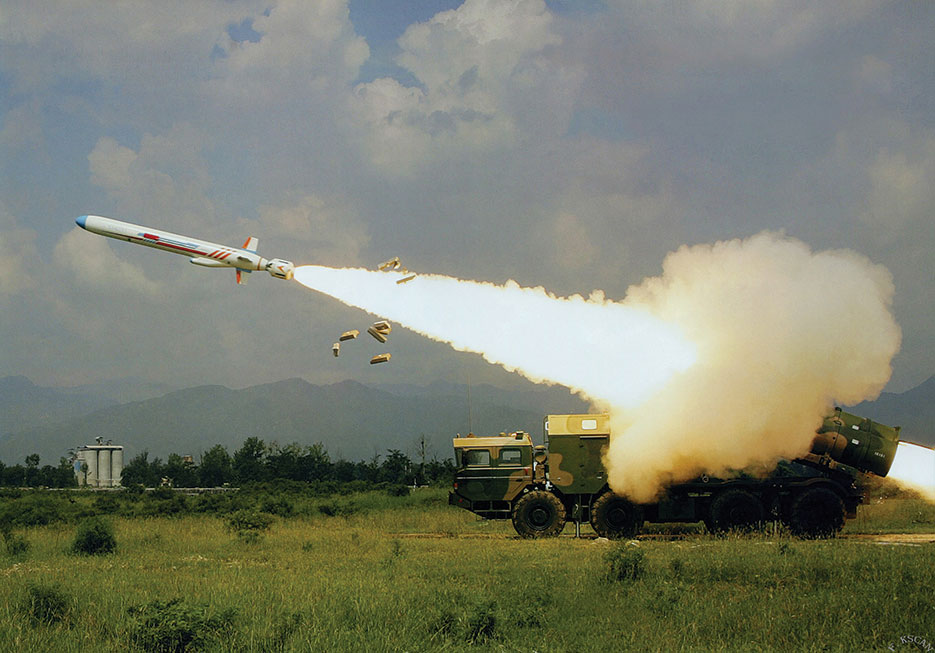
YJ-62 antiship cruise missile launched by transporter erector launcher (Courtesy Sino Defense )
China’s military modernization is focused on building modern ground, naval, air, and missile forces capable of fighting and winning local wars under “informatized conditions.” The principal planning scenario has been a military campaign against Taiwan, which would require the PLA to deter or defeat U.S. intervention. Beijing is now broadening this focus to its Near Seas (Yellow, East, and South China seas) more generally.
The PLA has sought to acquire asymmetric “assassin’s mace” technologies and systems to overcome a superior adversary and couple them to the command, control, communications, computers, intelligence, surveillance, and reconnaissance (C4ISR) systems necessary for swift and precise execution of short-duration, high-intensity wars.
A key element of the PLA’s investment in antiaccess/area-denial (A2/AD) capabilities is the development and deployment of large numbers of highly accurate antiship cruise missiles (ASCMs) and land-attack cruise missiles (LACMs) on a range of ground, naval, and air platforms. China’s growing arsenal of cruise missiles and the delivery platforms and C4ISR systems necessary to employ them pose new defense and nonproliferation challenges for the United States and its regional partners.
Military Value
Chinese writers rightly recognize cruise missiles’ numerous advantages. Cruise missiles are versatile military tools due to their potential use for precision conventional strike missions and wide range of employment options. Although China appears heavily focused on precision conventional delivery, cruise missiles could also be employed to deliver nuclear, biological, or chemical weapons. Due to their superior aerodynamic flight stability compared to ballistic missiles, cruise missiles—by conservative estimates—enlarge the lethal area for biological attacks by a factor of 10.
Modern cruise missiles offer land, sea, and air launch options, allowing a “two-stage” form of delivery that extends the already substantial range of the missiles themselves. They may also be placed in canisters for extended deployments in harsh environments. Because cruise missiles are compact and have limited support requirements, ground-based platforms can be highly mobile, contributing to prelaunch survivability. Moreover, cruise missiles need only rudimentary launch-pad stability, enabling shoot-and-scoot tactics.
Since cruise missile engines or motors do not produce prominent infrared signatures on launch, they are not believed to be detectable by existing space-warning systems, reducing their vulnerability to post-launch counterforce attacks. The potential combination of supersonic speed, small radar signature, and very low altitude flight profile enables cruise missiles to stress naval- and ground-based air defense systems as well as airborne surveillance and tracking radars, increasing the likelihood that they will successfully penetrate defenses. 1 Employed in salvos, perhaps in tandem with ballistic missiles, cruise missiles could saturate defenses with large numbers of missiles arriving at a specific target within a short time.
At the same time, optimal employment of cruise missiles imposes significant requirements: accurate and timely intelligence, suitable and ideally stealthy and survivable delivery platforms, mission planning technology, command, control, and communications systems, and damage assessment. China has lagged in these areas, but its experts recognize their importance, and the relevant Chinese organizations are working hard to make progress.
Institutional and Organizational Actors
China began introducing ASCMs into its inventory in the late 1950s. The Fifth Academy under China’s Ministry of National Defense was assigned the lead role in coordinating national efforts in ASCM research, design, and licensed production. Established in 1956 with U.S.-trained scientist Qian Xuesen as its first director, the Fifth Academy was instrumental in China’s cruise missile development. Acting on guidance from the Central Military Commission, in 1958 the PLA Navy (PLAN) headquarters built an ASCM test site at Liaoxi, Liaoning Province.
Following several bilateral agreements, the Soviet Union transferred Type 542 KS-1 Komet (North Atlantic Treaty Organization [NATO] designation: SSC-2A Salish) shore-to-ship and Type 544 P-15 Termit (NATO designation: SS-N-2A Styx) antiship missiles, models, and technical data to China beginning in 1959. Moscow was to assist Beijing with these and other missile programs. The P-15 would provide the basic foundation for China’s future development of more advanced ASCMs and eventually LACMs.
In 1960, Nanchang Aircraft Manufacturing Company established an assembly line to initiate ASCM production; it would later produce Shangyou-, Haiying-, and Yingji-series ASCMs. Despite the departure of Soviet advisors in September 1960, China conducted its first successful missile test that November. In 1964, China’s first ASCM, a license-produced version of the P-15, passed factory tests. The following year, its first flight test was successful. In late 1967, the resulting “Shangyou-1” missile was approved for production, and it entered service in the late 1960s. 2
As part of China’s efforts to develop an indigenous defense industry base, cruise missile programs received high-level political support from the beginning. In 1969, Zhou Enlai reportedly approved the establishment of a Military Industry Enterprise Base to produce ASCMs. Top leaders allocated funding and human capital and helped protect programs from political interference during the Cultural Revolution.
Yet this support has an important caveat: political leaders placed the highest priority on nuclear and ballistic missile programs given their strategic deterrence function. Cruise missiles, while prioritized more highly than aircraft and some other armaments, suffered from their logical application as armaments for the air force and navy and were subordinated to ground forces. Moreover, as the early Nanchang connection indicates, ASCMs were initially developed within China’s aviation industry. This fact, and the industry’s connection to a politically suspect PLA Air Force (PLAAF), imposed significant limitations.
Cruise missile programs therefore encountered more problems and registered slower progress than their ballistic missile counterparts. Not until the late 1960s and early 1970s was China able to produce its own modified derivatives of early Soviet-model cruise missiles. While recent years have witnessed remarkable progress in ASCMs such as the YJ-62 and LACMs such as the YJ-63/AKD-63 and DH-10, China continues to rely on foreign technological support—particularly Russian and Ukrainian design assistance.
To address persistent problems in its defense research, development, and acquisition system, China has converted numbered ministries to corporations, encouraged competition (with mixed results), and separated military requirements and evaluations (General Armaments Department) from civilian defense industry management and production (formerly the Commission of Science, Technology, and Industry for National Defense, now the State Administration for Science, Technology, and Industry for National Defense). China has simultaneously worked to maximize access to foreign technology and employs an extensive bureaucracy to facilitate its transfer (very effectively) and absorption (less effectively).
China’s cruise missile design, research, development, and manufacturing are now concentrated in a single business division within one of two state aerospace conglomerates, the China Aerospace Science and Industry Corporation (CASIC) Third Academy. One of seven design academies under CASIC—which has over 100,000 employees—the Third Academy is China’s principal research and development (R&D) and manufacturing entity for cruise missiles; all others are secondary. Established in 1961, the Third Academy has been involved in the design and development of 20 types of cruise missiles, including the indigenous Haiying- and Yingji-series and their export versions. 3 Today, it boasts 10 research institutes and 2 factories, with over 13,000 employees, including 2,000 researchers and around 6,000 technicians.
China’s aviation industry remains involved in cruise missile R&D and production. Hongdu Aviation Industry Group (formerly Nanchang Aircraft Manufacturing Company), under Aviation Industry Corporation of China, produced Feilong-series cruise missiles for export. 4
Finally, for three decades China has marketed a wide range of indigenously produced cruise missiles (and other weapons systems) through China Precision Machinery Import and Export Corporation (CPMIEC), the CASIC Third Academy’s export management branch. Established in 1980, CPMIEC is a member of the Xinshidai Group and jointly owned by CASIC and the Chinese Aerospace Science and Technical Corporation.
Antiship Cruise Missile Developments
Like other nations, China has come to regard ASCMs as an increasingly potent means of shaping the outcome of military conflicts and thereby also strengthening peacetime deterrence. China has developed its own advanced, highly capable ASCMs (the YJ series) while also importing Russian supersonic ASCMs, which have no operational Western equivalents. (See table 1 for a list of Chinese ASCMs.)
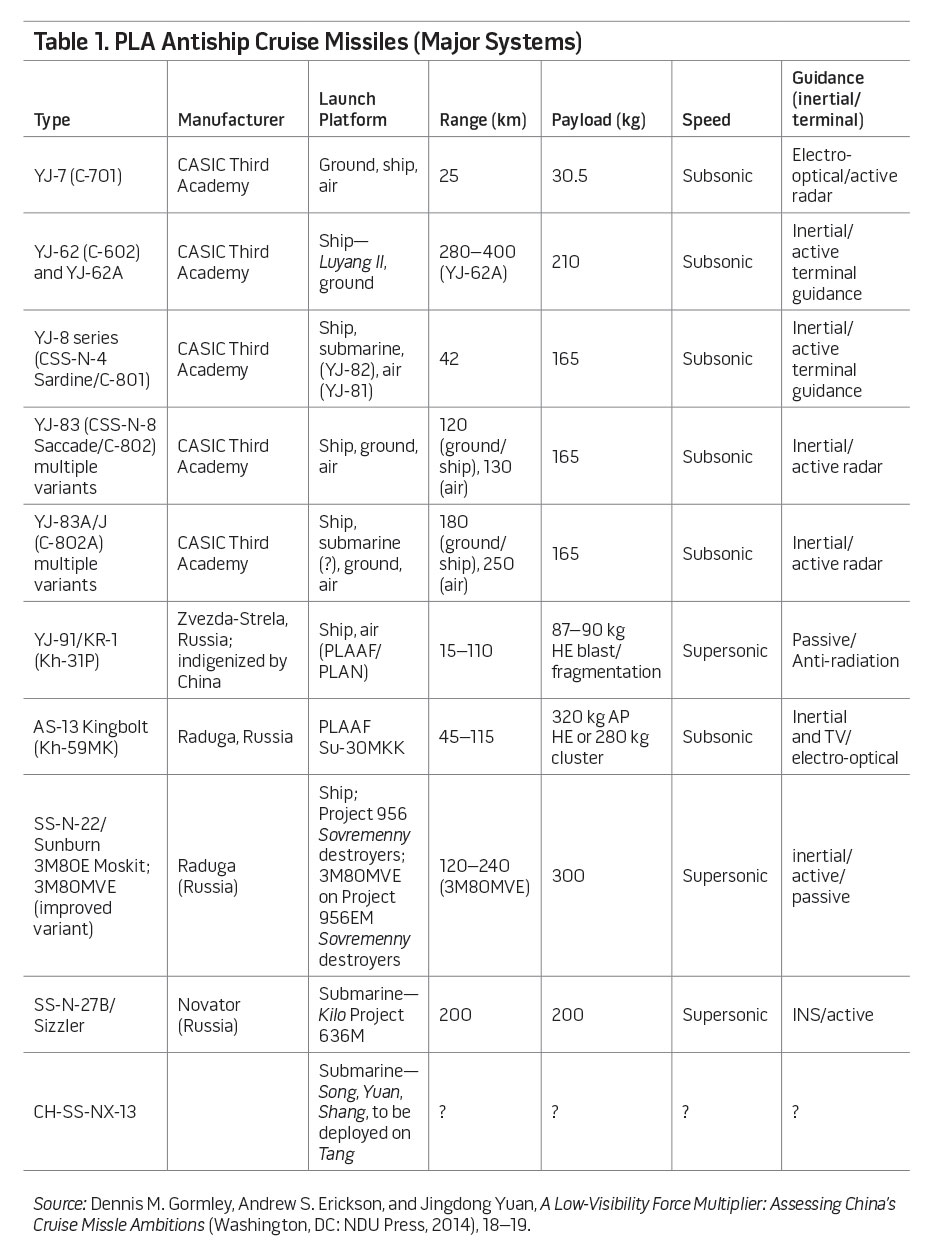
China’s most sophisticated and threatening imported Russian ASCMs include the 3M80E and 3M80MVE Moskit (NATO designation: SS-N-22 Sunburn) and the 3M54E Klub (NATO designation: SS-N-27B Sizzler). China’s Sovremenny -class destroyers (Project 956E and 956EM) boast the supersonic Sunburn ASCMs that were first delivered to China in 2000–2001. The Project 956E ships carry the early 3M80E missile with a range of 120 kilometers (km), while the Project 956EM destroyers have the 3M80MVE that has an optional longer range (240 km) through the incorporation of a second, high-altitude flight profile setting. But this longer range comes at a price, as a 3M80MVE missile using the higher altitude profile would be detectable at much greater distances and thus more vulnerable to attacks from advanced air defense systems, such as Aegis. Both missiles execute sea-skimming attacks at an altitude of 7 meters and perform terminal maneuvers to reduce the target’s point defense systems effectiveness. The Sunburn is reported to have a speed of Mach 2.3 and has a 300-kilogram (kg) semi-armor piercing warhead. 5
Eight of China’s Kilo -class submarines are Project 636M variants fitted with the Klub-S missile system, which includes the 3M54E/SS-N-27B Sizzler ASCM—also known earlier as Novator Alpha. This missile is unique in that it combines a subsonic, low-altitude approach with a supersonic terminal attack conducted by a separating sprint vehicle. The 3M54E’s cruise range is 200 km at a speed of Mach 0.6–0.8. This is followed by the release of a solid-rocket-propelled, sea-skimming sprint vehicle that travels the last 20 km to the target at a speed of Mach 2.9. The 3M54E ASCM has a 200-kg semi-armor-piercing warhead.
As in so many other areas, even as China seeks the best foreign systems available, it continues to develop increasingly capable indigenous systems. Of China’s foremost indigenous ASCMs, the YJ-82 and YJ-83/83K are the most widely deployed, while the YJ-62 is among the most advanced. The YJ-82 is a solid-rocket-propelled, submarine-launched missile contained in a buoyant launch canister that is, for all intents and purposes, identical to the U.S. submarine-launched Harpoon. While credited with a range of 42 km, the lack of a solid-rocket booster, as with the surface-ship-launched YJ-8/8A, strongly suggests that the YJ-82’s range will be shorter. The missile has a speed of Mach 0.9 and a terminal sea-skimming attack altitude of 5 to 7 meters, and it carries a 165-kg high-explosive fragmenting warhead. 6
The YJ-83/83K missile represents an evolutionary improvement over the YJ-8/8A and the exported C802. Entering service with the PLAN in 1998–1999, the YJ-83 missile has the same propulsion system as the export C802 missile but uses an indigenous CTJ-2 turbojet instead of the French-made TRI 60-2. By replacing the bulky electronics and inertial reference unit (IRU) of the YJ-8/8A/C802 with digital microprocessors and a strap-down IRU, additional volume was made available to increase the YJ-83’s range to 180 km at a speed of Mach 0.9. The air-launched YJ-83K has a rated range of 250 km at the same speed. Both the YJ-83 and 83K possess a slightly larger high-explosive fragmenting warhead of 190 kg. The YJ-83 is the main ASCM of the PLAN and is currently outfitted on virtually every surface combatant in active service. The YJ-83K can be carried by large and small aircraft alike and has been seen on JH-7/A fighter-bombers and H-6 bombers. The export variant of the YJ-83/83K is the C802A and the air-launched C802AK. 7
In September 2005, China unveiled the C602 ASCM for the first time. The small-scale model was clearly larger than the one of the C802 nearby, and the system brochure boasted of a longer range (280 km), global positioning system (GPS) guidance—an unprecedented claim—and a larger semi-armor-piercing warhead (300 kg). The missile size was roughly consistent with large round launch canisters that had started showing up on coastal defense test sites and the Type 052C destroyers then under construction in 2004. The indigenous YJ-62 is very similar to the YJ-83 technologically and largely reflects an evolutionary change in size. While many journals, articles, and Web sites quote the YJ-62’s range as 280 km, this value is only appropriate to the export C602. China has limited the range of its export cruise missiles in conformance with the Missile Technology Control Regime restrictions of 300 km. The YJ-62 itself has a true range on the order of 400 kms. The long range likely necessitated the need for satellite navigation, and the YJ-62 is described as having the ability to use both GPS and Beidou constellations. The missile’s speed is between Mach 0.6 and 0.8, and it executes a sea-skimming terminal attack at 7 to 10 meters. With the exception of the Type 052C destroyers, the YJ-62 is only deployed in mobile coastal defense batteries. 8
Finally, China has been working diligently on producing its own supersonic cruise missiles after the failed YJ-1/C101 and HY-3/C301. Both the YJ-12 and YJ-18 are undergoing tests and represent the next phase in China’s ASCM capabilities. The YJ-12 appears to be a considerably lengthened Russian Kh-31–type missile and is speculated to have a range of 250 km and a speed of Mach 2.5. The YJ-12 is probably an aircraft-carried weapon only. Thus far, only certain H-6 bombers have been seen with a long pylon necessary to support a large missile with an integrated ramjet/booster propulsion system. 9
The YJ-18 appears to be a Chinese copy of the 3M54E Klub. This missile has been described as having a cruise range of 180 km at Mach 0.8 and a sprint range of 40 km at Mach 2.5 to 3.0. It has been reported to be submarine torpedo tube–capable, which is consistent with the CH-SS-NX-13 missile discussion in the Department of Defense’s 2010 and 2011 annual reports to Congress. The YJ-18 has also been characterized as being able to be launched from a surface ship’s vertical launching system (VLS), which is consistent with the capabilities of the generalized or universal VLS being fitted to the new Type 052D destroyer. 10
Along with the growing improvements in ASCM performance, the PLAN has begun to expand its training and has become more diverse and realistic in recent years with increasing focus on cruise missile operations. Beijing has furnished its ASCMs with improved guidance and has started to implement satellite navigation capabilities. Most of the PLAN warships now have a dedicated over-the-horizon (OTH) targeting system, either the Russian-supplied Mineral-ME, or the indigenous version. Still, OTH targeting remains a challenge.
Chinese researchers are studying how to best overcome Aegis defenses and target adversary vulnerabilities. ASCMs are increasingly poised to challenge U.S. surface vessels, especially in situations where the quantity of missiles fired can overwhelm Aegis air defense systems through saturation and multi-axis tactics. More advanced future Chinese aircraft carriers might be used to bring ASCM- and LACM-capable aircraft within range of U.S. targets.
A consistent theme in Chinese writings is that China’s own ships and other platforms are themselves vulnerable to cruise missile attack. But China appears to believe it can compensate by further developing its capacity to threaten enemy warships with large volumes of fire.
Land-Attack Cruise Missile Developments
China has deployed two subsonic LACMs, the air-launched YJ-63/AKD-63 with a range of 200 km and the 1,500+ km-range ground-launched DH-10. (See table 2 for a list of Chinese LACMs.) Both systems benefited from ample technical assistance from foreign sources, primarily the Soviet Union/Russia. The first-generation YJ-63 is an air-launched LACM that employs an electro-optical (EO) seeker with man-in-the-loop steering via a command data link. This missile reportedly reached initial operating capability in 2004, was first seen in 2005 in Internet photography, and is right at the cusp as to when China incorporated satellite navigation in some of their weapons systems. It is currently unknown if the YJ-63/AKD-63 has this ability. 11 In addition to the YJ-63, two other LACMs use some sort of a command data link to feed back the data gathered from the EO sensor: the YJ-83KH and the K/AKD-88. 12 The second-generation DH-10 has a satellite navigation/inertial guidance system, but may also use terrain contour mapping for redundant midcourse guidance and a digital scene-matching sensor to permit an accuracy of 10 meters. Development of China’s Beidou / Compass navigation-positioning satellite network is partly intended to eliminate dependence on the U.S. GPS for guidance.

Beijing has purchased foreign systems and assistance to complement its own indigenous LACM efforts. From Israel, it has received Harpy antiradiation drones with standoff ranges of 400+ km. It is conceivable that China may also have the Russian Klub 3M-14E SS-NX-30 LACM, which can be launched from the PLAN’s Project 636M Kilo -class submarines and deliver a 400-kg warhead to a range of 300 km. But there is little evidence at present to support this possibility.
While current DH-10 ground-launch cruise missiles and YJ-63/AKD-63 air-launched systems are most relevant for a Taiwan contingency, there are strong signs that China is expanding its inventory to include both air-launched and ship-launched LACMs. An air-launched version of the DH-10, called the CJ-20, has reportedly been tested on the H-6 bomber, which has the capability to carry four CJ-20 LACMs externally.
China’s Weapon Test Ship Dahua 892 has experimented with on-deck canister launchers that contain either YJ-18 ASCMs or DH-10 LACMs for at-sea testing. 13 Although most PLAN surface combatants have a limited capacity of 8 to 16 canister launchers—meaning tradeoffs between ASCMs and LACMs—China’s apparent interest in a sea-launched DH-10 strongly suggests that future PLAN destroyers, such as the new Type 052D, will likely be equipped with a new vertical launching system, with a greater capacity to carry both ASCMs and LACMs.
Should China add large numbers of air- and sea-launched LACMs to its already substantial inventory of ground-launched cruise missiles, it would significantly extend the range of the PLA’s capacity to employ LACMs to deal with contingencies beyond Taiwan and the rest of its immediate maritime periphery. 14 Time and dedicated effort will increase the PLA’s ability to employ LACMs, even in challenging combined-arms military campaigns.
Cruise Missile Platforms
A given type of cruise missile can typically be launched from many different platforms. Over the past decade, the PLA has commissioned numerous new, modernized ships, submarines, and aircraft capable of launching cruise missiles. China has produced a new array of frigates and destroyers that carry sophisticated medium- to long-range ASCMs, and some PLAAF/PLAN aviation aircraft can carry LACMs in addition to ASCMs. Song -, Kilo -, and Yuan -class diesel submarines are equipped with Russian and indigenous ASCMs. Shang -class nuclear-powered submarines have or will have ASCMs, as will their Type 095 follow-ons when they enter service. 15 China thus appears to be making a concerted effort to develop its delivery capabilities from air, surface, and subsurface platforms simultaneously. In the near term, China will likely continue to expand its cruise missile inventory and precision delivery capabilities.
Cruise Missile Employment, Doctrine, and Training
China’s new ASCM and LACM programs—like its current military modernization efforts more broadly—are focused on preparing for contingencies in the Taiwan Strait and other proximate disputed areas, which clearly include the possibility of U.S. intervention. The land, sea, and air components of such a contingency would involve ASCMs and LACMs. China appears to believe in the value of large-scale attacks in all three domains.
Since President Bill Clinton’s decision to deploy two aircraft carriers to waters near Taiwan in response to China’s March 1996 ballistic missile tests, PLA planners have focused on U.S. aircraft carriers as the main threat to the success of such PLA missions. Chinese strategists have thus sought ways to target U.S. carrier strike groups (CSGs); Chinese specialists are acutely aware of carrier vulnerabilities, having conducted a wide variety of research directed toward threatening aircraft carriers with “trump cards” such as cruise missiles. Aegis ships are also viewed as essential targets; without their protection, carriers are much more vulnerable to attack.
Various Chinese writings and the logical employment of forces China has been developing suggest that in the event of a maritime conflict with U.S. forces, the PLAN is likely to undertake massive multi-axis ASCM attacks against U.S. CSGs and their Aegis air defense perimeters. The PLAN’s focused experimentation and training in long-range sea strike, its variety of indigenous ASCM weapons, and modernization of ASCM delivery platforms may yield a high probability of success for this effort.
Potential Employment in a Taiwan Scenario
Chinese ASCMs and LACMs could be used in conjunction with other A2/AD capabilities to attack U.S. and partners’ naval forces, land bases, and sea bases that would be critical for U.S. efforts to respond to a Chinese attack on Taiwan. While cross-Strait relations are relatively stable at present, Beijing worries that that could change, and in any case wants to achieve reunification in peacetime, supported in part by its increasing military advantage over Taiwan.
Operating in tandem with China’s huge inventory of conventionally armed ballistic missiles, LACMs could severely complicate Taiwan’s capacity to use its air force to defend against Chinese attacks. Chinese military planners view LACMs as particularly effective against targets requiring precision accuracy (for example, airfield hangars and command and control facilities). They also view large-salvo attacks by LACMs and ballistic missiles as the best means to overwhelm enemy missile defenses.
Chinese planners emphasize the shock and paralytic effects of combined ballistic and LACM attacks against enemy airbases, which could greatly increase the effectiveness of follow-on aircraft strikes. These effects depend significantly on the number of launchers available to deliver missiles. China currently has between 255 and 305 ballistic missile and LACM launchers within range of Taiwan, which are capable of delivering sustained pulses of firepower against a number of critical airfields, missile defense sites, early warning radars, command and control facilities, logistical storage sites, and critical civilian infrastructure such as electrical distribution. 16
Proliferation Implications
If China’s past record of proliferating ballistic missiles and technology is any indication of its intentions vis-à-vis cruise missile transfers, the consequences could be highly disruptive for the nonproliferation regime and in spreading A2/AD capabilities. China has sold ASCMs to other countries, including Iran. Beijing is suspected of furnishing Pakistan with either complete LACMs or components for local assembly.
China is not a full member of the 34-nation Missile Technology Control Regime (MTCR) but has pledged to adhere to the MTCR’s guidelines for missile and missile technology exports. Beijing began seeking MTCR membership in 2004 but has thus far been denied due to concerns about its poor proliferation record. The reason why China represents a critical wildcard regarding the further spread of cruise missiles is that Beijing’s current compliance with its pledge to follow MTCR guidelines is problematic, especially regarding cruise missiles and unmanned aerial vehicles. China needs not only to improve its commitment to address shortcomings in implementation and enforcement but also to work with exporters on improving their compliance with export control regulations and increase its own governmental capacity to deal with the explosive growth of exporting industries across China’s huge landmass. This would require significant efforts on China’s part. However, if China becomes a fully compliant MTCR member, it would be an important achievement in limiting widespread LACM proliferation.
China has invested considerable resources both in acquiring foreign cruise missiles and technology and in developing its own indigenous cruise missile design and production capabilities. These efforts are bearing fruit in the form of relatively advanced ASCMs and LACMs deployed on a wide range of older and modern air, ground, surface-ship, and subsurface platforms.
To realize the full benefits, China will need additional investments in all the relevant enabling technologies and systems required to optimize cruise missile performance. Shortcomings remain in intelligence support, command and control, platform stealth and survivability, and post-attack damage assessment, all of which are critical to mission effectiveness. To employ cruise missiles to maximum effect, the PLA needs to be able to locate targets at a distance, to deploy its air, surface, and submarine platforms within range of those targets, and then to execute a complex, carefully orchestrated joint air and missile campaign—potentially over many days. Operational success also requires accurate, near-real-time intelligence and post-attack assessment capabilities.
A successful campaign depends on both human and technical factors—extremely well-trained military personnel who have practiced these routines in diverse ways over many years and the command and control architecture needed to deal with complex combined-arms operations. Chinese planners envision establishing a Firepower Coordination Center within the Joint Theater Command, which would manage the application of air and missile firepower. Separate coordination cells would be created to deal with missile strikes, airstrikes, special operations, and ground and naval forces. Absolutely critical to achieving the delicate timing separating waves of missile strikes designed to leverage the effectiveness of subsequent aircraft attacks is developing the skill to coordinate and deconflict large salvos of missiles and waves of aircraft operating in multiple sectors. Chinese doctrine calls for such attacks, but the PLA’s ability to execute such a complex joint campaign against a capable adversary has never been demonstrated.

JH-7A fighter-bomber carrying KD-88 land-attack cruise missiles and drop tanks (Courtesy Sino Defense )
The future development of China’s cruise missile systems will depend on multiple factors. One is the role of ASCMs/LACMs in Chinese defense doctrines and military campaign strategies and their relative cost-effectiveness compared to other weapons systems. Second, cruise missile development, and indeed China’s overall defense modernization, will be determined by the government’s priorities as Beijing assesses its economic, social, and defense needs against the security environment and real and perceived threats. Third, U.S. military developments, including missile defenses, its own deployment and use of offensive weapons, and its intentions, will influence how China will react and thus the role of cruise missiles within PLA doctrine and force structure. Finally, the capabilities of China’s defense industry will continue to be a critical factor in whether Chinese cruise missiles can continue to develop and close the technical gap with other major powers such as the United States and Russia.
ASCMs and LACMs have significantly improved PLA combat capabilities and are key components in Chinese efforts to develop A2/AD capabilities that increase the costs and risks for U.S. forces operating near China, including in a Taiwan contingency. Effective ASCMs give the PLAN an expeditionary capability and the ability to deploy and take on other navies. LACMs give China new conventional strike options. These apply most to Taiwan, where ground-, air-, and sea-based systems could be employed, but some Chinese LACMs also have the range to reach Japan and the U.S. territory of Guam and will provide a limited capability wherever the PLAN can deploy. China plans to employ cruise missiles in ways that exploit synergies with other strike systems, including using cruise missiles to degrade air defenses and command and control facilities to enable follow-on airstrikes.
Defenses and other responses to PRC cruise missile capabilities exist, but they require greater attention and a more focused effort. They include the development of more effective missile defenses, technical countermeasures, and creative operational responses. Missile defenses against large-volume Chinese LACM threats will need special attention, if the poor U.S. performance against Iraq’s primitive and small number of LACMs in Operation Iraqi Freedom is an indicator of U.S. weaknesses vis-à-vis such threats. JFQ
- To be sure, the combination of all three of these aspects is difficult to achieve. A supersonic missile is usually not stealthy, particularly from an infrared perspective, and such missiles tend to fly higher to get decent engagement ranges. To delay detection and thereby reduce reaction time, subsonic missiles typically use low-altitude flight profiles. Combining all of them into one missile is difficult to do, and China currently lacks a missile with all three of these characteristics. Information presented by Christopher P. Carlson at the Workshop on Open Source Exploitation, sponsored by Naval War College and Potomac Foundation, Vienna, VA, March 3, 2014.
- A good synopsis of Chinese antiship cruise missiles (ASCM) development can be found in Wang Wei, “Development of the PLA-Navy’s Anti-ship Missile,” Shipborne Weapons 5 (May 2008), 35–47.
- For instance, the HY-2/4 ASCMs have been exported as the C-201/201W.
- This series is essentially defunct, having not competed well with the export versions of the HY and YJ series.
- Russia’s Arms and Technologies: The XXI Century Encyclopedia—Naval Weapons , Volume III (Moscow: Arms and Technologies Publishing House, 2001); Machine Building Design Bureau marketing brochure—3M80E antiship attack missile-weapon complex. For 3M80MVE characteristics, see the Tactical Missiles Corporation JSC Web site at <http://eng.ktrv.ru/production_eng/323/507/541/?PHPSESSID=b56ca0fa59423f9a752a0ccdc67eb72a>.
- Christopher P. Carlson, “China’s Eagle Strike—Eight Anti-Ship Cruise Missiles: YJ-81, YJ-81, and C802 (Part 2),” Defense Media Network, February 6, 2013, available at < www.defensemedianetwork.com/stories/chinas-eagle-strike-eight-anti-ship-cruise-missiles-yj-81-yj-82-and-c802/ >.
- “C602: Anti-Ship Missile Weapon System,” China National Precision Machinery Import and Export Corporation marketing brochure, 2010.
- Christopher P. Carlson, “YJ-12 Photographic Analysis,” February 2014; “Chinese YJ-12 Supersonic Anti-Ship Missile Revealed,” Chinese Military Review , January 2013, available at < http://chinesemilitaryreview.blogspot.com/2013/01/chinese-yj-12-supersonic-anti-ship.html >.
- Christopher P. Carlson, “Deciphering the Eagle Strike-8 Family of Anti-Ship Cruise Missiles,” presentation at Workshop on Open Source Exploitation.
- "PLA’s Tactical Air-To-Surface Missiles (Part 1),” SinoDefence , February 18, 2014, available at < http://sinodefence.com/2014/02/18/plas-tactical-air-to-surface-missiles-part-1/ >.
- Pan Wenlin, “Small Gas-Turbine Unit and China’s Antiship Cruise Missiles,” Shipborne Weapons 8 (August 2010), 14–25; “KD-63 (YJ-63), K/AKD-63,” Jane’s Air-Launched Weapons , January 28, 2014, available at < www.janes.com >.
- “Navalized DH-10 LACM,” China Defense Blog , July 25, 2012, available at < http://china-defense.blogspot.com/2012/07/navalized-cj-10-lacm.html >.
- James C. Bussert, “China Destroyer Consolidates Innovations, Other Ship Advances,” Signal , December 1, 2013, available at < www.afcea.org/content/?q=node/11972 >.
- Military and Security Developments Involving the People’s Republic of China 2013 , Annual Report to Congress (Washington, DC: Office of the Secretary of Defense, 2013), 4, available at < www.defense.gov/pubs/2013_china_report_final.pdf >.
- Military and Security Developments Involving the People’s Republic of China 2009 , available at < www.defense.gov/pubs/pdfs/China_Military_Power_Report_2009.pdf >. Figures were derived from the chart on page 66 of the 2009 report. Only CSS-6 and CSS-7 missile launchers and DH-10s were considered. As the most important factor in delivering pulses of power, missile launchers (not missiles) were the focus. Like aircraft launched from carriers, missiles launched are the appropriate measure of the intensity of fire within a unit of time.
- Mission Statement
- Advisors to the Board
- Military Fellows
- Jobs at MDAA
- Arizona AETOS ’25
- Hawai’i Space Science Initiative
- USC SHIELD ’24
- USC SHIELD ’23
- USC SHIELD ’22
- USC SHIELD Alerts
- USC SHIELD in the News
- Ronald Reagan Missile Defense Site, Vandenberg SFB
- Kauai Veteran’s Eternal Memorial and Missile Defense Viewing Site
- Lessons Learned Series
- Write Your Representative
- April 12th, 2022 U.S. Missile Defense – An Overview of Past, Current, and Future Roles and Responsibilities
- Virtual CRT: U.S. Missile Defense – An Overview of Past, Current, and Future Roles and Responsibilities
- MDAA Alert: The Roles and Responsibilities of Missile Defense
- Threat News
- Missile Defense News
- Air Defense News
- MDAA in the News
- Threat Basics
- Ukrainian War Updates
- Taiwan Incursion Updates
- Global Missile Tracker
- Space Threats Updates
- Notable Missile Tests
- Combat Launches
- Future Missile Threats
- U.S. Missile Defense
- Missile Defense of U.S. Partners
- Missile Defense Intercept Test Record
- Operational Intercepts by System
- Future BMD Systems
- Discontinued Programs
- U.S. Air Defense
- Air Defense of U.S. Partners
- Future Air Defense Systems
- Alerts Archive
- MDAA U.S. Ballistic Missile Defense Overview
- MDAA System/Issue Briefs
- MDAA Country Briefs
- Foreign Military Sales by Country
- 3D Panoramas
- Additional Resources
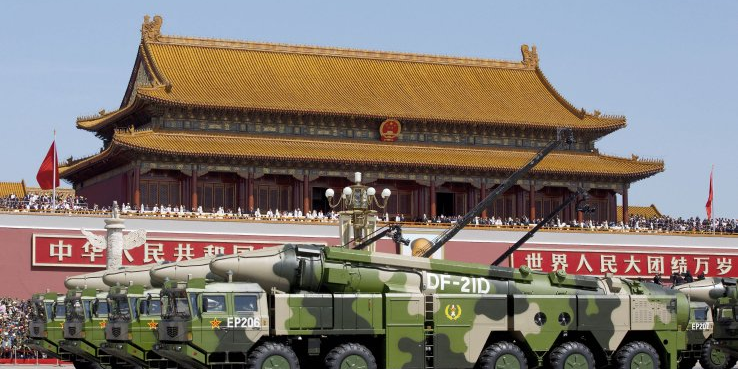
As China continues to rise to power, its ambitions rise alongside it. Today, the People’s Republic of China’s ultimate intentions are clear: it seeks to overthrow the U.S.-led order. In an effort to aggrandize itself, China hopes to dominate the Indo-Pacific region. This contest over the future of the regional and world order between the United States and China may potentially lead to massive conflict. For this reason, China poses the greatest danger to the U.S. national interest. [i]
As China prepares for a potential conflict, it has developed a diverse and sophisticated arsenal of ballistic and cruise missiles. These missiles are part of a broader military modernization to enhance Beijing’s ability to assert itself in regional and territorial matters.
China’s Nuclear Program and Doctrine
China became a nuclear weapon state when it exploded its first nuclear device in 1964. Since then, China has slowly developed and modernized its nuclear weapons program using a mixture of foreign and indigenous weapons designs and technology. China’s current nuclear arsenal contains approximately 350 nuclear weapons including silo-based and road-mobile intercontinental ballistic missiles, short and medium-range ballistic missiles, and submarine-launched ballistic missiles. Predictions about the size, status, and capabilities of China’s nuclear forces are often difficult given the secrecy surrounding China’s nuclear program and China’s extensive use of underground tunnels to store military hardware and possibly nuclear weapons. China also has refused to engage in strategic arms control dialogues that would require transparency about its nuclear forces. Generally, China views secrecy as an essential part of ensuring the survivability of its relatively small nuclear force and an integral part of its no-first-use policy. [ii]
Historically, China has maintained a nuclear doctrine based on the concept of ‘no-first-use’ (NFU), viewing its nuclear arsenal as a means of self-defense and deterrence. China’s military modernization program and upgrades to its nuclear weapons arsenal, along with its 2013 defense white paper that did not comment on China’s NFU pledge, have led some to question China’s commitment to its NFU policy. [iii] However, in its May 2015 defense white paper, Beijing reaffirmed its NFU policy stating that its nuclear weapons are for “strategic deterrence and nuclear counterattack.” [iv] In recent years China has also adopted a launch-on warning posture (LOW), called “early warning counterstrike,” which uses space and ground-based sensors and radars to detect an incoming enemy nuclear strike, allowing China to launch a strike of their own before they hit their targets.
In the last two years since 2020, China has been increasing their nuclear presence by constructing new Inter-Continental Ballistic Missile (ICBM) silos. They had previously maintained 20 active silos and have been constructing over 200 new silos, primarily in Northwestern China near the cities of Yumen and Hami. This expansion of capacity for active nuclear weapon capabilities is concerning because it is the first time in many years that they have done it. [viiii] This rapid action may be indicative of a new Chinese developmental nuclear policy. [x] A November 2022 Pentagon report stated that China has a stockpile of at least 400 nuclear warheads, with plans of increasing that number to 1,500 by 2035. [xi]
Ballistic Missile Program
China maintains a diverse and growing missile arsenal that it has been modernizing over the past couple of decades. China is in the process of phasing out its older missiles such as the DF-3, and DF-4, replacing them with upgraded versions including the DF-21, DF-31, and DF-31A. As it upgrades its missiles, China is incorporating ballistic missile technologies such as Multiple Independently-targeted Reentry Vehicles (MIRV) and Maneuverable Reentry Vehicles (MaRV). MIRV allows for ballistic missiles to carry multiple warheads that can be aimed at different targets within the same area, whereas MaRV is capable of maneuvering during reentry, increasing accuracy against fixed and moving targets, and even allowing warheads to avoid interception by missile defense systems. China acquired the technology and capability to develop and deploy MIRVs several decades ago, but Chinese leaders chose not to deploy missiles with this capability until recently. Over the last several years, China has developed, tested, and deployed several ballistic missiles capable of carrying MIRVs including the DF-5A and the DF-41.
China has also developed a sea-based missile arsenal. Its first nuclear-powered ballistic missile submarine (SSBN) the Type 092/ Xia-class, was launched in 1981, commissioned in 1987, and test-fired its first SLBM in 1988. The Xia Class SSBN is able to carry up to 12 JL-1 medium-range ballistic missiles that are capable of carrying nuclear warheads, giving China the third leg of its nuclear triad. It is not believed that the Xia-class submarine has ever left Chinese coastal waters due to vulnerabilities related to slow speed and a noisy engine. The Xia-class underwent a refit from 1995-2000, but it remained vulnerable to antisubmarine warfare platforms. The Xia-class was replaced by Jin-class submarines launched in the 2004-2012 timeframe.
China currently has four Type 094 Jin-class ballistic missile submarines that carry up to 12 JL-2 or JL-3 SLBMs. The Jin-class submarine is most likely China’s first credible sea-based nuclear deterrent. The U.S. DoD estimates there are 6 Jin-class submarines operational. The JL-2 SLBM is an intercontinental-range, three-stage ballistic missile that is similar to China’s DF-31 ICBM. The JL-2 has a range of more than 7,200 km and is equipped with either a single MT nuclear warhead or three to eight smaller MIRV’d warheads. The JL-3 is a newer SLBM, introduced sometime around 2021, with a longer range of more than 10,000km and can contain multiple warheads.
According to the Department of Defense’s Annual Report to Congress on Military and Security Developments Involving the People’s Republic of China 2022, China’s ballistic missile arsenal contains around 600+ SRBMs, 500+ MRBMs, 250+ IRBMs, and 300 ICBMs. [v]
In June 2022, a DOD report on the People’s Liberation Army (PLA) indicated that China possesses 400 DF-26 intermediate-Range Ballistic missiles (ICBMs). The DOD estimates that the DF-26 has a range of 2,500 miles, rendering it capable of striking Guam, giving it the nickname “Guam Killer” by Chinese media. [vi]
On August 4th, 2022, China began a three day exercise in which they launched 11 ballistic missiles. The exercises come as Speaker of the House, Nancy Pelosi, visited Taiwan against the multiple threats from Chinese leadership.
Cruise Missiles
China has been actively developing cruise missiles with foreign assistance, primarily from Russia. It already possesses nearly a dozen varieties of anti-ship missiles, such as the Russian-made SS-N-22, and is pursuing land-attack cruise missiles. According to the Department of Defense, China now has the capability to domestically produce highly accurate land-attack and anti-ship cruise missiles. The CJ-10 (DH-10) and CJ-100 (DF-100) ground-launched cruise missiles (GLCMs) have ranges of 1,500 and 2,000km, respectively. As of 2022, the U.S. DoD estimates China has more than 300 GLCMs. Their YJ-21 hypersonic cruise missile has a range of 1,000-1,500km and flies at a speed of up to 10 Mach.
In November of 2022, China revealed an air-launched version of their YJ-21 with the designation 2PZD-21. Like the YJ-21, the 2PZD-21 is a highly maneuverable hypersonic missile that can be fired from their H-6K bomber.
Hypersonic Weapons
In recent years China, Russia, and the United States have renewed efforts to develop hypersonic weapons as part of their conventional and nuclear arsenals. Hypersonic weapons are ultra-high-speed weapons that fly along the edge of space and accelerate between Mach 5 and Mach 10. Given their rate of speed and nonballistic trajectory, hypersonic weapons are difficult for current ballistic missile defense systems to intercept. Additionally, their low flight altitude prevents detection by terrestrial-based radars, as they are blocked by the curvature of the earth.
Since 2014, China has carried out several tests of its hypersonic glide vehicle (HGV). The HGV, the DF-ZF, is launched during the last stage of a missile and can reach nearly 7,500 mph (Mach 10), as well as a maneuver to avoid missile defenses and zero in on targets. This weapon can be configured to carry a nuclear or conventional warhead and China claims it is precise enough to attack ships at sea. Hypersonic weapons could also compress the number of times leaders have to make decisions in times of crisis because they can strike much faster than other weapons.
In 2018, China started trials for their Starry Sky-2 (Xingkong-2) Waverider HGV cruise missile. The glider uses the shock waves produced by hypersonic flight to help propel it forward and keep it in the air.
Currently, the DF-ZF is carried by the DF-17 HGV-armed MRBM, which was first fielded in 2020. China continues to develop its hypersonic weapon technology, with the testing of an ICBM-range HGV that traveled 40,000km in July 2021, flying around the world and barely missing a target back in China.
According to a leaked classified daily briefing by the J-2 dated February 28, 2023, the DF-27, an HGV-equipped IRBM, was successfully tested three days earlier on Feburary 25, flying for 12 minutes and traveling 2,100km. J-2 believes that land attack and antiship variants have already been deployed.
Close-Range Ballistic Missiles (CRBMs)
Short range ballistic missiles (srbms), medium-range ballistic missiles (mrbms), intermediate-range ballistic missiles (irbms), intercontinental ballistic missiles (icbms), submarine-launched ballistic missiles (slbms), land attack cruise missiles (lacms), anti-ship cruise missiles (ascms), hypersonics, map of china’s missile ranges.

Click Here to Read MDAA’s Report on China’s Ballistic Missile Capabilities
China’s Expansion
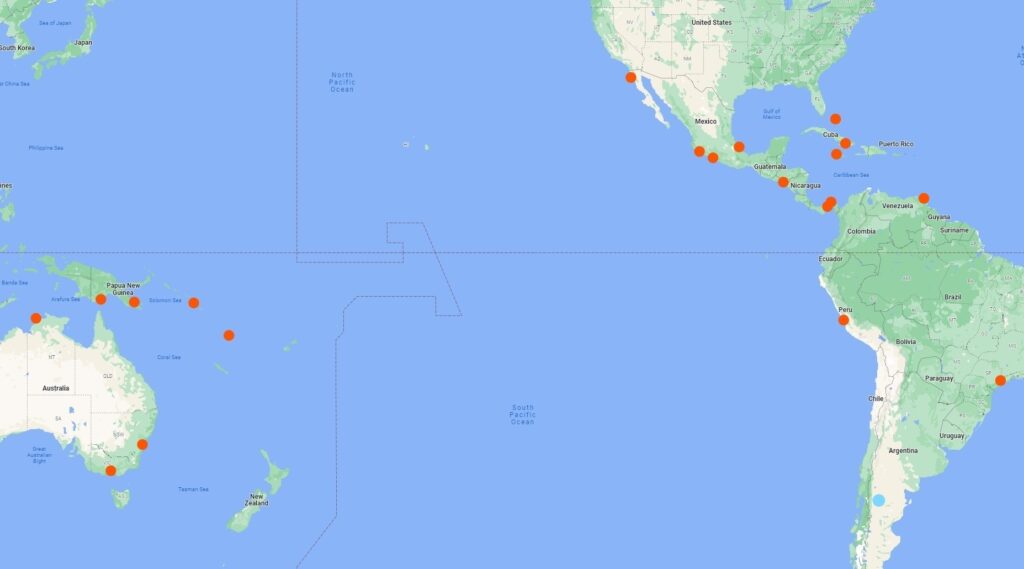
Red Circles: Ports owned or controlled by China
- Australia – Darwin, Melbourne, Newcastle (Obtained October 2015 , September 2016 , June 2018 )
- Brazil – Paranaguá (Obtained February 2018)
- Cuba – (Obtained December 2021)
- El Salvidor – (Obtained 2019)
- Jamaica – (Obtained April 2015)
- Mexico – Manxanillo , Lazaro Cardenas, Veracruz
- Panama – Balboa, Colon (Obtained March 1997, May 2016)
- Papua New Guinea – Daru (Obtained September 2018, December 2020 )
- Peru – Lima and Chancay (Obtained April 2019)
- Solomon Islands – (Obtained October 2019)
- St. Johns – Harbor reconstruction ( 2021 )
- Trinidad – (Obtained June 2013)
- Vanuatu – Luganville (Obtained April 2018)
Blue Circle: Space Station with 16 story antennae
- Argentina – Patagonia (Obtained 2014 )
Many of the ports shown can be used to port military vehicles to refuel and make repairs. Notably, pictures show that the port in Peru is constructed to be able to house extremely large ships, as well as submarines. Their JL-2 ballistic missile launched from submarines would be able to hit any part of the United States from this port, and their new JL-3 has a range great enough to hit the continental US from outside the Pacific Ocean, giving it full range from their port in Brazil. Both of these ports are inside the Guam defense, and on the other side of the US from the GBI defenses.
Recent News
- Analysts have used satellite imaging to argue that China is practicing missile strikes on Taiwan and Guam. [vii] A Chinese-controlled Taiwan would be disastrous to the United States’ interests in Asia. Taiwan—being China’s most direct link to the first island chain—would offer the People’s Liberation Army (PLA) the opportunity to project its power in the region further. Moreover, China’s conquest of Taiwan could cause many American allies and partners in the Indo-Pacific to bandwagon with China. As a U.S. territory in the region, Guam is vital for the United States’ ability to project power in the Indo-Pacific. Because China’s growing missile threat directly endangers both of these islands, the U.S. must focus on strengthening its missile defense capabilities. [viii] Experts have advised significantly increasing defense capabilities, like the THAAD missile defense system for targeting ballistic missiles, and an Aerostat sensor system like the JLENS for missile detection throughout the surrounding second island chain. While the US does have one THAAD battery located in Guam, more cost-effective low altitude defense systems are needed. China has made great strides in September with their DF-17 and DF-ZF hypersonic missile technology, which increases demand for more advanced Glide Phase Interceptor (GPI) missile defense systems around Guam. The Pentagon is currently exploring these the integration of GPI upgrades into current THAAD and Aegis systems.
- Taiwan Plans Indigenous Cruise Missile Deployment in 2024
- Indian Army gets portable Igla-S Air defence system; Here's all about next-gen missiles to be deployed at China, Pakistan borders
- China sends warplanes, boats around Taiwan following phone call between Xi and Biden
- China plans 1,240-mile range missile to shoot bombers at unprecedented distance
[i] https://www.belfercenter.org/thucydides-trap/overview-thucydides-trap
[ii] https://armscontrolcenter.org/countries/china/
[iii] https://www.vifindia.org/sites/default/files/china-s-defence-white-paper-%202013-assertions-of-a-super-power-%20in-making.pdf
[iv] http://english.www.gov.cn/archive/white_paper/2015/05/27/content_281475115610833.htm
[v] https://www.defense.gov/CMPR/
[vi] https://taskandpurpose.com/analysis/military-guam-china-war-taiwan/
[vii] https://www.scmp.com/news/china/military/article/3177538/satellite-images-suggest-china-practising-missile-strikes
[viii] https://www.defenseone.com/ideas/2022/05/guam-needs-better-missile-defensesurgently/367275/
[viiii] What’s Driving China’s Nuclear Buildup? – Carnegie Endowment for International Peace
[x] China’s Nuclear Doctrine: Debates and Evolution – Carnegie Endowment for International Peace
[xi] 2022 Pentagon Report on Chinese Military Development – USNI News
Missile Threat and Proliferation
- Missile Payload Destruction Cost Comparisons
- Technological Threat Assessment
- War By 2025 Threat Analysis
- Ballistic Missile Basics
- Hypersonic Weapon Basics
- Cruise Missile Basics
- Rocket and Mortar Basics
- Unmanned Aircraft System (UAS) Basics
- Non-State Actors
- Israel-Hamas War Updates
- United States Incursion Tracker
- World Drone Comparison
- Dong Feng-16 (CSS-11)
- Dong Feng-15 (CSS-6)
- Dong Feng-11 (CSS-7)
- M-7 (8610)/CSS-8
- Dong Feng-12 (CSS-X-15)
- Dong Feng-3 (CSS-2)
- Dong Feng-21 (CSS-5)
- Dong Feng-21D (CSS-5)
- Dong Feng-26
- Dong Feng-4 (CSS-3)
- Dong Feng-5 (DF-5)
- Dong Feng-31 (CSS-10)
- Dong Feng-41(CSS-X-20)
- DH-10 / CJ-10
- Changjian-20 (CJ-20)
- DF-ZF Hypersonic Glide Vehicle
- Dong Feng-17
- Chinese Spy Balloons
- Hwasong-17/KN-27
- Pukguksong-3 (KN-26)
- KN-02 (Toksa)
- Hwasong-5 (Scud-B Variant)
- Hwasong-6 (Scud-C Variant)
- Hwasong-9 (Scud-ER/Scud-D Variant)
- Polaris-2 (Pukguksong-2/KN-15)
- Taepodong-1
- Hwasong-12/KN-17
- Taepodong-2
- KN-08 / Hwasong-13
- Hwasong-14/KN-20
- Hwasong-15/KN-22
- 3M22 Zircon
- Avangard (Hypersonic Glide Vehicle)
- RS-26 Rubezh
- OTR-21 Tochka (SS-21 Scarab)
- SS-1 Scud-A
- R-17 Elbrus (SS-1 Scud-B)
- S-300P Air and Missile Defense System
- S-300V Air and Missile Defense System
- S-400 Triumf Air Defense System
- SS-1d Scud-C
- R-17 VTO/SS-1e (Scud-D)
- Iskander-M (SS-26)
- Kh-47M2 Kinzhal (“Dagger”)
- SS-18 Satan/R-36M2 Voyevoda
- SS-19 Stiletto
- RS-12M Topol (SS-25 Sickle)
- SS-27 / Topol-M
- SS-27 Mod 2 / RS-24 Yars
- RS-28 Sarmat (Satan 2)
- AS-15 Kent (Kh-55 Granat)
- RK-55 Relief (SS-N-21 Sampson)
- 3M-54 Klub (SS-N-27 Sizzler)
- 3M-14 Kalibr (SS-N-30A)
- P-15 Termit (SS-N-2 Styx)
- P-6 Progress/SS-N-3C Shaddock
- P-120 Malakhit (SS-N-9 Siren)
- P-270 Moskit/SS-N-22 Sunburn
- P-500 Bazalt (SS-N-12 Sandbox)
- P-700 Granit/SS-N-19 “Shipwreck”
- KH-35 (SS-N-25 Switchblade)
- P-800 Oniks (SS-N-26 Strobile)
- P-1000 Vulkan
- R-29R / SS-N-18 Stingray
- R-29RM / SS-N-23 Skiff
- SS-N-30 Bulava
- Tondar-69 (M7, CSS-8)
- Natanz Enrichment Facility
- Fordow Uranium Enrichment Plant
- Arak Heavy Water Nuclear Reactor
International Cooperation
Missile Defense Advocacy Alliance
515 King Street Suite 330 Alexandria VA, 22314 Phone: 703.299.0060 [email protected]
Quick Links
- Privacy Policy
© Missile Defense Advocacy Alliance 2024
- Contact Form
- Air Recognition
- Navy Recognition
- Defense & Security Web TV
- World Army Pictures
- Libya conflict
- British Army News
- LIMA 2023 Official TV
- IDEX 2023 News
- IDEX 2023 TV
- AUSA 2022 News
- MSPO 2022 News
- ADEX 2022 News
- Defense News France
- Eurosatory 2022 News Official Online Daily
- Eurosatory 2022 TV Official Web Television
- DSA 2022 TV Official Web Television
- World Defense Show 2022 TV Web Television
- UMEX 2022 TV Official Web Television
- IDEX 2021 News Official Online Show Daily
- IDEX 2021 TV Official Web Television
- ShieldAfrica 2021 News Official Online Show Daily
- ShieldAfrica 2021 TV Web Television
- IDEF 2021 News Official Online Show Daily
- IDEF 2021 TV Official Web Television
- SOFINS 2021 News Online Show Daily
- DEFEA 2021 News Official Online Show Daily
- DEFEA 2021 TV Official Web Television
- Army-2021 News Show Daily
- MSPO 2021 TV Official Web Television
- AUSA 2021 News
- DSEI 2021 News Official Online Show Daily
- DSEI 2021 TV Official Web Television Land Zone - Pictures
- Partner 2021 News
- Milipol Paris 2021
- EDEX 2021 Web TV
- News Official Online Show Daily
- TV Official Web Television
- FEINDEF 2021 News
- KADEX 2020 TV Official Web Television - Pictures
- KADEX 2020 News Official Show Daily
- Eurosatory 2020 News Official Online newspaper
- Eurosatory 2020 TV Web Television
- DSA NATSEC 2020 News Official Show Daily
- DSA NATSEC 2020 TV Official Web Television - Pictures
- UMEX 2020 News Official Show Daily
- UMEX 2020 TV Official Web Television - Pictures
- DefExpo 2020 TV Web Television - Pictures
- MSPO 2020 News Official show Daily
- MSPO 2020 TV Official Web Television - Pictures
- AUSA 2020 News Show Daily
- DX Korea 2020 News Official show Daily
- DX Korea 2020 TV Official Web Television - Pictures
- GDA 2019 TV Web Television - Pictures
- ShieldAfrica 2019 Official News Online
- ShieldAfrica 2019 Official web TV - Pictures - Video
- IDEX 2019 News Official Online Show Daily
- IDEX 2019 TV - Pictures - Video
- Enforce TAC 2019 Web TV - Pictures - Video
- MILEX 2019 TV Web Television pictures defense exhibition Belarus
- SITDEF 2019 News Official Online Show Daily
- SITDEF 2019 Official Web TV - Pictures
- SOFINS 2019 TV Web Pictures Video
- LAAD 2019 TV Web Pictures Video
- IDEF 2019 TV Web Pictures Video
- FEINDEF 2019 TV Web Pictures Video
- IDET 2019 TV Web Pictures Video
- ISDEF 2019 News Official show Daily
- ISDEF 2019 Official Web TV - Pictures
- Partner 2019 TV Web Television pictures
- Army-2019 TV Web Television - Pictures - Video
- Milipol Paris 2019 TV Web Television - Pictures
- ExpoDefensa 2019 News Show Daily
- ExpoDefensa 2019 TV Web Television pictures
- BIDEC 2019 News Official Online Show Daily
- BIDEC 2019 TV Official Web Television
- AUSA 2019 TV Web Television
- DSEI 2019 News Official Online Show Daily Land Zone
- DSEI 2019 TV Official Web Television Land Zone - Pictures
- MSPO 2019 News Official Foreign Show Daily
- MSPO 2019 TV Official Web Television
- Defense and Security Thailand 2019 TV Official Web Television
- BSDA 2018 Web TV pictures
- KADEX 2018 News Official Online Show Daily
- KADEX 2018 Official Web TV - Pictures
- SOFIC 2018 Web TV pictures
- Warrior Competition 2018 TV pictures KASOTC
- DEfExpo 2018 Web TV - Pictures
- DSA 2018 News Official Online Show Daily
- DSA 2018 Official Web TV - Pictures
- SOFEX 2018 Official Online Show Daily News
- SOFEX 2018 Official Web TV - Pictures
- Enforce Tac 2018 TV Web Television Pictures
- Singapore AirShow 2018 News
- Shot Show 2018 News Show Daily
- IAV 2018 News Show Daily
- UMEX 2018 Official Web TV - Pictures
- Eurosatory 2018 Official News Online
- Eurosatory 2018 TV - Pictures - Video
- AirShow China 2018 Web TV - Pictures - Video
- IndoDefence 2018 News Official Online Show Daily
- IndoDefence 2018 Official Web TV - Pictures - Video
- IDEAS 2018 News Official Online Show Daily
- IDEAS 2018 Official web TV - Pictures - Video
- EDEX 2018 News Official Online Show Daily
- EDEX 2018 Official Web TV - Pictures
- AUSA 2018 TV - Pictures - Video
- AAD 2018 News Official Show Daily
- AAD 2018 Official Web TV - Pictures
- DVD 2018 TV - Pictures - Video
- ADEX 2018 Official News Online
- ADEX 2018 Official web TV - Pictures - Video
- DX Korea 2018 News Official show Daily
- DX Korea 2018 Official Web TV - Pictures
- Army-2018 Russia Web TV - Pictures - Video
- MSPO 2018 Official News Online
- MSPO 2018 Official Web TV - Pictures - Video
- Shield Africa 2017 Online Show Daily News - Report - Coverage
- ShieldAfrica 2017 Web TV Television - pictures - Video
- LAAD 2017 Online Show Daily News - Report - Coverage
- LAAD 2017 Web TV Television - pictures - Video
- IDEX 2017 Official Online show Daily News
- IDEX 2017 Web TV Television - pictures - Video
- SOFINS 2017 Official Online show Daily News
- SOFINS 2017 TV Official Web Television - pictures - Video
- SITDEF 2017 News Official Online show Daily Report Coverage
- SITDEF 2017 TV Official Web Television - pictures - Video
- SOFIC 2017 Web TV Television - Pictures - Video
- IDEF 2017 Online show Daily News
- IDEF 2017 Web TV Television - Pictures - Video
- IDET 2017 News Official Online show Daily Report Coverage
- IDET 2017 Official Web TV Television - Pictures - Video
- Partner 2017 Web TV Television - Pictures - Video
- Army-2017 Web TV pictures
- MSPO 2017 Online Show Daily News - Coverage - Report
- MSPO 2017 Official Web TV Television - pictures - Video
- AUSA 2017 Online Show Daily News
- Expodefensa 2017 Online show Daily News
- Expodefensa 2017 TV - Pictures - Video
- Arms & Security 2017 Web TV Television - Pictures - Video
- BIDEC 2017 Official Online show Daily News
- BIDEC 2017 Official Web TV Television - Pictures - Video
- Defense & Security Thailand 2017 Official Web TV - Pictures - Video
- Milipol Paris 2017 TV - Pictures - Video
- GDA 2017 Online Show Daily News
- ADEX 2017 Korea Official Web TV Television - Pictures - Video
- DSEI 2017 News Show Daily
- DSEI 2017 TV pictures gallery
- IDEAS 2016 Official Online show Daily News
- IDEAS 2016 Official Web TV Television - Pictures - Video
- High Tech Port 2016 Web TV Television - Pictures - Video
- High Tech Port 2016 Online Show Daily News - Coverage - Report
- Airshow China 2016 Web TV Television - Pictures - Video
- INDO DEFENCE 2016 Web TV Television - Pictures - Video
- AUSA 2016 Official Web TV Television - Pictures - Video
- ADEX 2016 Official Online Show Daily News - Report - Coverage
- ADEX 2016 Official Web TV Television - Pictures - Video
- AAD 2016 Web TV Television - Pictures - Video
- Army 2016 Online Show Daily News - Coverage - Report
- Army 2016 Official Web TV Television - pictures - Video
- MSPO 2016 Official Web TV Television - pictures - Video
- MSPO 2016 Online Show Daily News - Coverage - Report
- Eurosatory 2016 Official News Online - Report - Coverage
- Eurosatory 2016 Web TV Television - pictures - Video
- KADEX 2016 Official Online Show Daily News - Coverage - Report
- KADEX 2016 Web TV Television - pictures - Video
- SOFEX 2016 Official Online show Daily News
- SOFEX 2016 Official Web TV Television - pictures - Video
- Warrior Competition 2016 KASOTC Pictures - Video Gallery
- DSA 2016 Official Online Show Daily News - Report - Coverage
- DSA 2016 Official Web TV Television - pictures - Video
- Defexpo 2016 Web TV Television - pictures - Video
- DefExpo 2016 Web TV Television - pictures - Video
- ISNR 2016 Online Show Daily News
- KIDEC 2016 Official Online Show Daily News - Coverage - Report
- KIDEC 2016 Official Web TV Television - pictures - Video
- IWA 2016 Online Show Daily News
- Expodefensa 2015 Online Show Daily News - Coverage - Report
- Expodefensa 2015 Web TV Television - Pictures - Video
- Milipol 2015 Web TV - Pictures
- AUSA 2015 Online Show Daily News - Coverage - Report
- Defense & Security 2015 Official Online show Daily
- Defense & Security 2015 Pictures - Video - Web TV
- APHS 2015 Online Show Daily News - Coverage - Report
- APHS 2015 Web TV Television - pictures - Video
- MSPO 2015 Official Online Show Daily News - Coverage - Report
- MSPO 2015 Official Web TV Television - pictures - Video
- RAE 2015 Official Online Show Daily News - Coverage - Report
- RAE 2015 Official Web TV Television - pictures - Video
- DSEI 2015 Online Show Daily News - Coverage - Report
- DSEI 2015 Web TV Television - pictures - Video
- Partner 2015 Web TV Television - pictures - Video
- IDET 2015 Official Online Show Daily News - Coverage - Report
- IDET 2015 Official Web TV Television - pictures - Video
- SITDEF 2015 Official Online Show Daily News - Coverage - Report
- SITDEF 2015 Pictures - Video - Web TV
- IDEF 2015 pictures - Web TV - Video
- SOFINS 2015 pictures - photos - Web Television
- IDEX 2015 Official Online Show Daily News - Coverage - Report
- IDEX 2015 Pictures - Video - Web TV
- ARMY 2015 Russia News Coverage Report
- IndoDefence 2014 Official Online Show Daily News - Coverage - Report
- IndoDefence 2014 Web TV Television - Pictures - Video
- AirShow China 2014 pictures - video - Web TV
- AUSA 2014 Pictures - Video - Web TV
- IDEAS 2014 Official Online Show Daily News - Coverage - Report
- IDEAS 2014 Official Web TV Television - Pictures - Video
- ADEX 2014 Official Online Show Daily News - Coverage - Report
- ADEX 2014 Pictures - Video - Web TV
- MSPO 2014 Official Online Show Daily News - Coverage - Report
- MSPO 2014 Pictures - Video - Web TV
- AAD 2014 Show Daily News - Coverage - Report
- AAD 2014 Pictures - Video gallery
- Defexpo 2014 Online Show Daily News - Coverage - Report
- Defexpo 2014 Pictures - Video - Web TV
- Eurosatory 2014 Official Online Show Daily News - Coverage - Report
- Eurosatory 2014 Exhibitors - Visitors information
- Eurosatory 2014 Pictures - Web Television - Video
- Eurosatory 2014 journal officiel actualités - reportages
- SOFEX 2014 Official Online Show Daily News - Coverage - Report
- SOFEX 2014 Pictures - Video - Official Web TV
- KADEX 2014 Official Online Show Daily News - Coverage - Report
- KADEX 2014 Pictures - Video gallery
- CIDEX 2014 Official Online Show Daily News - Coverage - Report
- CIDEX 2014 Pictures - Video - Web TV
- IDEB 2014 Official Online Show Daily News - Coverage - Report
- IDEB 2014 pictures - video gallery
- DSA 2014 Official Online Show Daily News - Coverage - Report
- DSA 2014 Pictures - Video gallery
- IDEX 2013 Show Daily News
- IDEX 2013 Pictures - Video
- IDEF 2013 Show Daily News - Coverage - Report
- IDEF 2013 Pictures - Video
- Partner 2013 pictures - video
- IDET 2013 News coverage report
- IDET 2013 Pictures Video gallery
- 14 July 2013 French army parade pictures
- Défilé militaire 14 juillet 2013 photos - vidéo
- FED 2013 News - Coverage - Report
- LAAD 2013 Show Daily News - Coverage - Report
- LAAD 2013 Pictures & Video
- RAE 2013 Russian Arms Expo News - Pictures - Video
- IAV 2013 News Coverage Report
- IAV 2013 pictures gallery
- SITDEF 2013 News Coverage Report
- SITDEF 2013 Show Daily News - Coverage - Report
- TADTE 2013 pictures - video gallery
- MSPO 2013 Show Daily News - Coverage - Report
- MSPO 2013 Pictures & Video
- AUSA 2013 news - coverage - report
- AUSA 2013 pictures - video
- DSEI 2013 Show Daily News - Report - Coverage
- DSEI 2013 pictures - video
- Milipol 2013 Show News - Coverage - Report
- Milipol 2013 Pictures - Video
- Counter IEDs 2012
- IndoDefence 2012 Daily News
- Indo Defence 2012 pictures
- IndoDefence 2012 news - report - coverage
- AAD 2012 Show Daily News
- AAD 2012 pictures video gallery
- Online Show Daily News
- Eurosatory 2012 pictures
- Eurosatory 2012 Journal actualités
- Visitors / Exhibitors information
- Eurosatory 2012 FR
- MSPO 2012 Show Daily News
- MSPO 2012 pictures gallery
- Engineering Technologies 2012 pictures
- Milipol Qatar 2012 daily news
- DVD 2012 Show Daily News
- DVD 2012 pictures
- Interpolitex 2012 News - Coverage - Report
- IDEB 2012 Daily News
- IDEB 2012 pictures gallery
- AUSA 2012 Daily News Report
- AUSA 2012 Pictures - Video
- SOFEX 2012 Daily News
- SOFEX 2012 Pictures gallery
- DSA 2012 Daily News
- DSA 2012 pictures
- DefExpo 2012 Daily News
- DefExpo 2012 pictures
- Future Artillery 2012
- CIDEX 2012 Show Daily News
- CIDEX 2012 pictures
- AirShow China 2012 News Coverage Report
- AirShow China 2012 pictures
- MILIPOL 2011 FR
- MILIPOL 2011
- BRIDEX 2011
- Paris Air Show
- SITDEF 2011
- United Arab Emirates TV News
- United States
- Afghanistan
- South Africa
- Chinese Wolf 4x4
- Tiger 4x4 APC
- ZFB05F anti-riot vehicle
- ZFB05 Anti-riot gas disperse vehicle
- ZFB05 PsyOps vehicle
- ZFB05G Broadcasting vehicle
- First Win 4x4 armoured
- Hirtenberger Defence Systems
- deFNder Light Remote Weapon Stations
- deFNder Medium Remote Weapon Stations
- FN FCU Fire Control Unit
- FNS9 Pistol
- Marksman shooting firearms training system
- SCAR-H Assault rifle
- SCAR-L Assault rifle
- 3000 Series
- CT-CV Weapon System
- Cockerill Medium Calibre Weapon Systems
- XC-8 Turret
- Anti-Ram Mobile Barrier F-11 F-18
- AAD Automatic activation device
- ALTV Check Point
- ALTV Torpedo
- Bastion APC
- Bastion Patsas
- VLRA 2 TDN-TDE
- VLRA TDN-TDE Commando
- PFM Motorized Floating Bridge
- SPRAT Modular Assault Bridge
- EC725 Caracal helicopter
- Spynel Series
- Aravis 4x4 protected vehicle
- Caesar 155mm howitzer
- VBCI 8x8 IFV
- Nexter Robotics
- CRAB Panhard
- Sphinx Lockheed Martin turret
- WASP / Hornet turret
- P&C International
- RENK France
- SERT Life Support
- Military Shelters and Tents
- Field military camps and army command posts
- Military Mobile Field Hospitals & Army Medical Posts
- Dynamit Nobel Defence
- Welp Armouring
- ELSEL LIVET Remote Controlled Weapon Station
- ASCOD tracked IFV APC
- Eagle 4x4 6x6 armored
- Piranha IFV APC
- International Armored Group
- AACE Amphibious Engineer
- Kaplan STA Anti-Tank
- PARS 4x4 anti-tank
- PARS III 6x6 armored
- PARS III 8x8 armored
- ACV-15 AAPC
- Tulpar AIFV
- Cobra 4x4 APC
- Cobra 4x4 VBAS
- Cougar 4x4 APC
- Fiona 6x6 APC
- Scorpion 4x4 MRAP
- Shrek mine clearance
- Spartan 4x4 APC
- Typhoon 4x4 MRAP
- Puma 4x4 APC
- Predator Riot Control Vehicle
- Warrior 4X4 APC
- Fox RRV Rapid Reaction Vehicle
- CZ Scorpion EVO 3 A1 submachine gun
- P-07 and P-09 pistols
- WB Electronics - WB Group
- LAZAR 2 MRAV MRAP APC
- Lasta-95 advanced training aircraft
- M03 NORA-B-52 K-I 155mm howitzer
- M09 105mm 6x6 truck-mounted howitzer
- NORA B-52 155mm 8x8 howitzer
- NORA B-52K1 155mm howitzer
- SOKO SP RR 122mm howitzer
- VÝVOJ Martin
- DAT-CON Defence
- Armored Water Cannon
- Guardian Xtreme 4x4 6x6 MRAP
- Rila 4x4 MRAP
- Titan 4x4 APC
- Titan-D 4x4 APC
- Titan-S 4x4 APC
- Titan-S 6x6 APC
- Titan-V 4x4 V-Hull APC
- Legion ISOREX 4X4 MRAP
- Ajban Class
- Hafeet Class
- JAIS N35 Class
- Thunder 2 Armoured Truck
- Soucy Defense
- ReconRobotics
- PRC-2080 VHF Tactical radio system
- PRC-2090 HF Tactical radio system
- Ranks/Uniforms
- Uniforms / Ranks
- Wheeled Vehicle
- Ranks:/Uniforms
- Artillery Vehicle
- Wheeled Armoured
- Unmanned Aerial - Ground Systems
- Wheeled Vehicles
- PLZ45 Type 88 155mm self-propelled howitzer
- Field Equipment
- YW 531 Variants
- YW531C Variants
- Missile Systems
- Missile systems
- Ranks / Uniforms
- Light Armoured
- Type 10 MBT
- Wheeled armoure & tactical vehicles
- Artillery vehicle
- Missile System
- Wheeled vehicle
- PT-16 tank MBT
- BM-21 Grad 9K51 122mm MLRS
- BMD-1 Variants
- BMP-3 Variants
- BTR-50 Variants
- MT-LB Variants
- S-300V Antey-300 SA-12 Gladiator
- S-300VM Antey-2500 SA-23 Gladiator
- 50P6 Launcher truck
- 50N6A multi-function radar
- 50K6 Command and Control Vehicle
- Relay station Vityaz 50R6
- S-400 Triumph air defense missile system
- S-500 Prometheus
- T-64 Variants
- T-72 Variants
- T-80 Variants
- Variants BRDM-2
- Variants BRDM-1
- 4K3FA/4K4FA
- Artillery Vehicles
- Variants Panhard VBL
- Variants VAB Renault
- Unmanned aerial & ground systems
- Wheeled armoured
- CV90 Variants
- Field Equipments
- Field combat equipment
- PARS FNSS Variants
- Artillery Vehicles & Systems
- Hadid HM 20
- Light armoured
- Karrar tank MBT
- Safir-74 MBT
- Wheeled vehicles
- Unmanned Ground & Aerial Systems
- Batlle Tank
- Battle Tank
- Light Armored
- Military Equipment
- M142 HIMARS MLRS
- GPV variants
- HEMTT variants
- Humvee variants
- Jeep J8 variants
- LAV variants
- LAV-300 variants
- M977 A2 HEMTT Oshkosh variants
- RG33 variants
- Stryker variants
- Analysis Defense and Security Industry
- Armies in the world
- Defence & Security Industry Technology
- HAMAS - Israel War 2023
- Russia Ukraine War 2022
- Ukraine / Russia conflict
- Sangaris operation Central African Republic
- Sangaris opération militaire République Centreafrique.
- Syria conflict news
- Libya conflict day by day
- Operation Serval in Mali French Army
- Online Advertising & Marketing services
- Advertising in Online Show Daily Defence & Security events
- Advertising and Marketing on Defence & Security News Web TV
- Send Press Release
- World Army Equipment
DF-10 CJ-10 DH-10 cruise missile surface-to-surface technical data sheet specifications pictures video 12301163
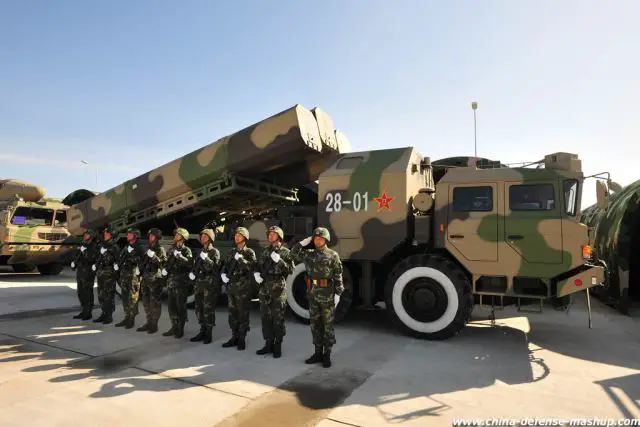
Defense Breaking News
- Analysis: Russia Secretly Trains 120,000 Soldiers for New Offensive Operations i...
CJ-10 (missile)
The CJ-10 ( simplified Chinese : 长剑-10 ; traditional Chinese : 長劍-10 ; pinyin : Cháng Jiàn 10 ; lit. 'long sword 10') is a second-generation Chinese land-attack cruise missile . It is derived from the Kh-55 missile. It is reportedly manufactured by the China Aerospace Science and Industry Corporation Third Academy and the China Haiying Electro-Mechanical Technology Academy.
Initially, the CJ-10 was identified as the DH-10 ( Chinese : 东海-10 ; pinyin : Dong Hai 10 ; lit. 'east sea 10') by Western media and analysts. United States Department of Defense reports used "DH-10" until 2011, and then "CJ-10" from 2012. Publications may use both terms interchangeably. The Center for Strategic and International Studies believes that the CJ-10 is a member of the Hongniao (HN) series of missiles; Ian Easton believes that the CJ-10 is the same missile as the HN-2, and that the HN-3 is the "DH-10A".
Description
In the September 2014 edition of Joint Forces Quarterly , an article reportedly described CJ-10 as a subsonic missile with a range of more than 1,500 km and a 500 kg payload. The article attributes the missile having a guidance package using inertial navigation system , satellite navigation , terrain contour matching , and a likely Digital Scene-Mapping Area Correlator for terminal guidance . Ships and transporter erector launchers were listed as launch platforms.
In 2013, the United States believes that the missile has a range of more than 1,500 km, and can potentially carry either conventional or nuclear payloads; other sources claim the missile has ranges of 2,000 km (1,200 mi; 1,100 nmi), or as much as 4,000 km (2,500 mi; 2,200 nmi). In 2004, the CJ-10 was credited with a CEP of 10 m.
The YJ-100 is a subsonic anti-ship version of the CJ-10 with a range of 800 km (500 mi; 430 nmi). The missile can be air-launched by the H-6 bomber and fired from a vertical launching system of the Type 055 destroyer according to Chinese expert Li Li on Chinese television. The YJ-100 will have an onboard radar and is potentially a counter to the American AGM-158C LRASM .
Development
The development of the CJ-10 could have potentially benefited significantly from Chinese acquisition of NATO and Soviet missile technology in the 1990s, notably the Kh-55 (purchased from Ukraine ), and the Tomahawk cruise missiles (that were unexploded and purchased from Iraq and Serbia ). The detailed production engineering data packages of the Kh-55 LACM were bought from Ukraine in 2001. A 1995 Russian document suggested a complete production facility had been transferred to Shanghai, for the development of a nuclear-armed cruise missile. Originally it was thought that this was based on the 300 km-range Raduga Kh-15 (AS-16 'Kickback'), but it now appears that it was the Kh-55 that was transferred to China.
Jane's Information Group reported the CJ-10 was tested 2004. An August 2012 report by Jane's indicated that a shipborne variant of the missile may have been tested on Bi Sheng , a Chinese weapons trial ship.
The United States in 2008 estimated that 50–250 missiles were in service, increasing to 150–350 in 2009.
- YJ-62 – similar anti-ship missile
- WS-3 ASW missile
- TD series (TD500-ER)
- YZ-100 series
- YZ-102 series
- YZ-200 series
- TG-100/250/500/1000-ER
- Air-launched cruise missiles
- Naval weaponry of the People's Republic of China
- Nuclear cruise missiles of the People's Republic of China
- Military equipment introduced in the 2000s
- Surface-to-surface missiles of China
This page was last updated at 2024-03-30 11:54 UTC. Update now . View original page .
All our content comes from Wikipedia and under the Creative Commons Attribution-ShareAlike License .
If mathematical, chemical, physical and other formulas are not displayed correctly on this page, please use Firefox or Safari

China Shows Off Its Deadly New Cruise Missiles
DH-10 for a speedy 1100-pound delivery
By Jeffrey Lin and P.W. Singer | Published Mar 10, 2015 4:00 PM EDT
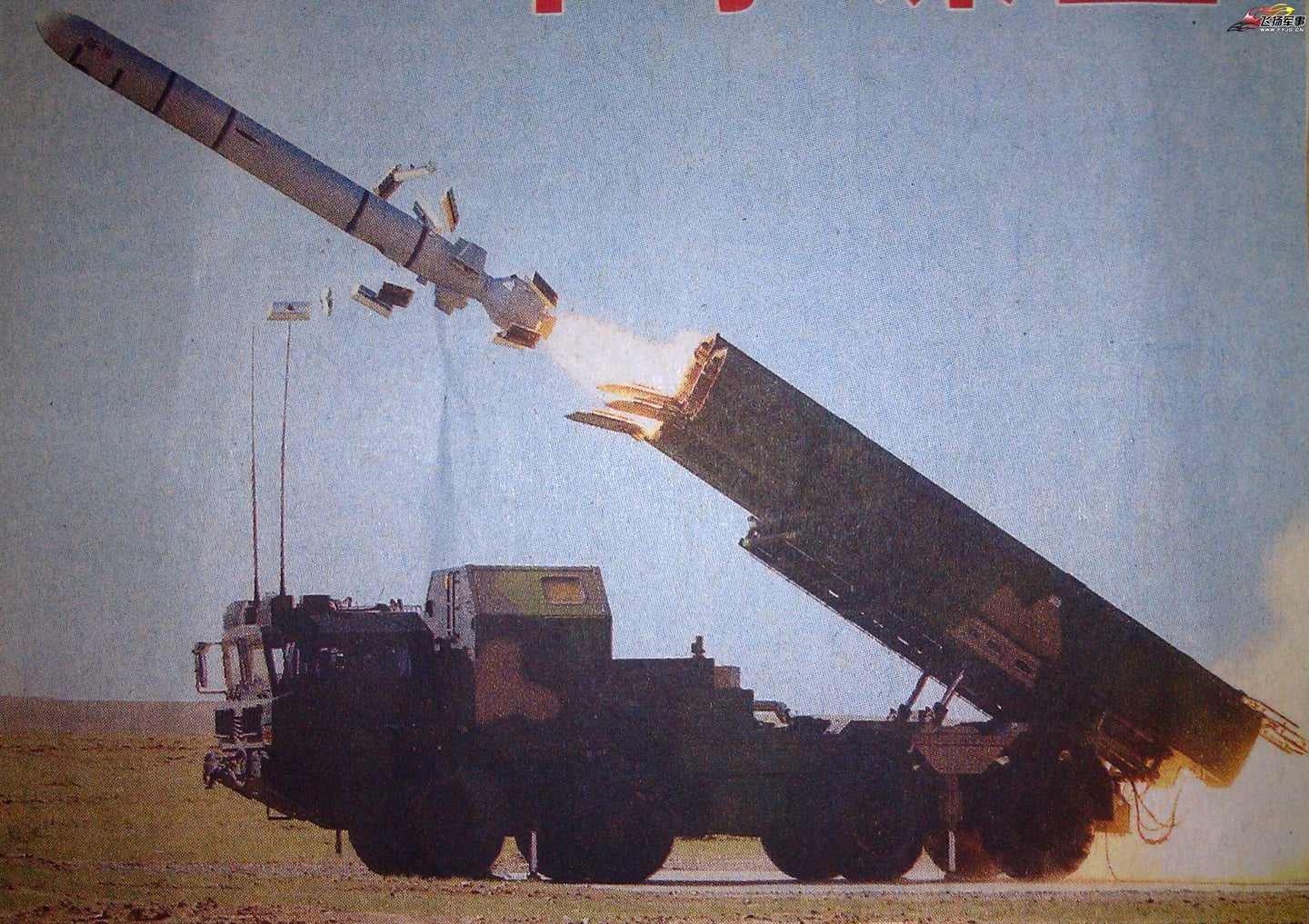
A DH-10 land attack cruise missile (LACM) launches out of its canister, heading for parts unknown. Weighing about 1-1.5 tons (about the same size as the American Tomahawk cruise missile), it can be launched from land on a three missile transport erector launch (TEL) vehicle, as shown here. Shortly after ejection from the canister, the DH-10’s two retractable wings, four tailfins and belly mounted engine air intake will all unfold as it flies as far as 2,500km away. Reportedly able to hit a garage-door-sized target, in addition to carrying a 1100-pound high explosive warhead toward a target with accuracy, the DH-10’s payload can either be a high explosive warhead or submunitions for attacking fighters on runways and tank columns, nuclear warheads and fuel air explosives. Notably, DH-10s use several guidance modes, including satellite navigation, inertial navigation, and terrain following, making it hard to jam or deceive.

DH-10 at rest
Despite all the attention lavished on Chinese ballistic missiles like the DF-15 and DF-21, its cruise missiles are some of the most flexible, stealthy and deadly weapons that the PLA has at its disposal. Cruise missiles have several advantages over ballistic missiles; they can be updated during flight on battlefield changes, their low flight altitude makes them very stealthy against air defense radars, and fuel efficient turbofan engines allow cruise missiles to be lighter and cheaper than their ballistic counterparts.

DH-10 on Parade
The DH-10 was first displayed in public during the 2009 National Day Parade, China is estimated to have at least several hundred DH-10 cruise missiles. The flexibility of the DH-10 is its greatest strength. The 1550 mile-ranged H-6K bomber can carry 7 KD-20s (the DH-10’s air launched variant), giving the PLAAF the ability to reach Pacific targets distant as Hawaii. The Type 052D guided missile destroyer and Type 093A nuclear attack submarines can carry DH-10s in their vertical launch systems; sea-launched DH-10s can cover over 90 percent of all global land mass. The next generation of this family will be the YJ-100, a proposed DH-10 anti-ship variant that will have an onboard radar and 800km range, potentially China’s answer to the U.S. Long Range Anti-ship Missile.

Air Delivery
More broadly, future Chinese cruise missiles are likely to branch off into two families, one optimized for stealth, and the other focused on hypersonic flight. China is already investing large amounts of money into hypersonic engines and stealth technology; stealthy cruise missiles would be used to achieve operational surprise while hypersonic missiles would run past heavy enemy defenses. Other advancements would likely include electromagnetic attack technology, datalinks and distributed sensors/networks and improved AI to autonomously hunt targets in denied environments.
You may also be interested in:
The Missiles of Zhuhai: China Displays New Strike Arsenal
Want to Know What it Feels Like to be Blown up by a Chinese Missile? Ask This Ship.
SY-400 Guided Rocket Makes TV Debut
Hypersonic Gliders, Ramjets and Even Faster Things Coming to China’s Military
Like science, tech, and DIY projects?
Sign up to receive Popular Science's emails and get the highlights.

Sophisticated Of the CJ-10 Cruise Missile from Type 055 Destroyer, Called China's Tomahawk Missile
Quoted from Missiledefenseadvocacy.org, the CJ-10 is a surface-to-ground attack type cruise missile. That means if this missile uses a warship-based system as its launch point.
It is known that the launch of the CJ-10 missile uses the Vertical Launching System (VLS) as its flagship. He also explained that there are 3 types of defense equipment in the Chinese Navy that are capable of carrying this missile.
Like the Type 052D, as well as the Type 055 Destroyer can carry CJ-10 missiles as a mainstay of surface-to-ground attacks. Moreover, if the Type 093A submarine is also capable of carrying this missile as a mainstay of its land attack. That means this missile is the same as the US Tomahawk which is usually launched from the Arleigh Burke class.
It was informed that the CJ-10 missile was made by the Third Academy of China Aerospace Science and Industry Corporation. And China Haiying Academy of Electro-Mechanical Technology also contributed to this missile.
The CJ-10 Cruise Missile can be modified with a nuclear warhead. Not only nuclear, but conventional warheads are on this missile. In addition, the CJ 10 missile was shown at a military parade held in 2009. That means that the DF 10 cruise missile is thought to have entered Chinese military service that year.
In addition, the CJ -0 missile has an impressive maximum range. It is explained if the cruising range of this missile can reach 2,000 kilometers. From the far cruising range, the CJ 10 missile is included in the strategic defense equipment.
Especially capable of being transported by Chinese warships and submarines and destroyers. Moreover, the advantages of this missile can be easily mobilized anytime and anywhere. Then for the CEP of the CJ-10 missile, it is only about 5-10 meters from the target position. With the CEP, the accuracy of this missile is very precise.
It is also informed that the warhead payload of the CJ-10 missile is about 450 kilograms. From these warheads, land-based strategic targets can be attacked with 1 attack by CJ-10 missiles. It is also informed that this missile can use a high-explosive warhead or submunitions.
The CJ-10 subministry missile can strike fighter aircraft on runways and tank columns. That means vital targets can be hit by CJ-10 missiles. Moreover, the matter of nuclear warheads and air explosives is in this Chinese missile.
With this warhead, this missile has a high quality of attack power. As a result, the CJ-10 missile can use the GLONASS satellite system and GPS for guidance. From the guide it is clear that this missile is of very high quality. There are also allegations that the CJ-10 missile has low flight power and subsonic speed.
That means that the response speed of the CJ-10 missile is very capable and of high quality. Especially about the placement of this missile on the Type 055 Chinese Navy destroyer. By placing this missile in the Type 055, this defense system can load missiles in large numbers.
And its massive attack power makes this missile capable of becoming a game changer if war breaks out. Therefore, if the role of the CJ-10 missile becomes one of the important defense equipment to destroy various targets. Especially targets on the ground can be destroyed by this missile with precision.
And of high alert are Chinese warships carrying CJ-10 missiles. Because the movement of this missile-carrying ship in critical times can be a frightening specter. Moreover, the East Asia region and the South China Sea are the locations for the Chinese destroyer carrying the CJ 10 missile to sail.
In addition, the CJ-10 missile is labeled as a cruise missile. Informed from thedrive.com on August 3, 2022, this is labeled as a cruise missile which means cruise missile. With the label as a cruise missile, it is clear that the attack power is very lethal.
As well as clearer information about the CJ-10 missile, some of which are still kept secret by China. And until recently, the users of the CJ-10 missile were only new to China. There is no information if China has not exported this missile later. For that we wait for further information on this cruise missile in the future.
Post a Comment
Our website uses cookies to improve your experience. Learn more
Contact Form
- Articles containing traditional Chinese-language text
- Articles incorporating text from Wikipedia
- Weapons of the People's Republic of China
- Nuclear cruise missiles of the People's Republic of China
CJ-10 (missile)
- View history
The CJ-10 (simplified Chinese: 长剑-10 ; traditional Chinese: 長劍-10 ; pinyin: Cháng Jiàn 10 ) is a land attack cruise missile (LACM) currently in service with the Second Artillery Corps of the People's Republic of China . It is the first of the Changjian (literally "long sword") series of long range land attack cruise missiles. [5] The CJ-10 debuted during the October 1 military parade in 2009. [6]
Besides the land attack variant, a possible shore to ship variant has also been rumored to be in Chinese service. Many Taiwan and Hong Kong media sources believe that the weapon has been developed to counter the US Navy 's Carrier battle groups , with the aim of a land based carrier destruction capability. [2] [3] [7]
The CJ-10A is an air-launched variant with a range of 2,000—2,200 km, intended to arm the Xian H-6K strategic nuclear bomber which can carry six of the missiles under its wings. [8]
- 1 Development
- 5 References
Development [ ]
The YJ-62 / CJ-10 missile family is based on China's earlier land-based Hongniao cruise missile family. The new design also incorporates elements of the Soviet Kh-55 cruise missiles. Moscow Defense Brief speculates that Ukraine may have had some role in the CJ-10 project. China may also have acquired several American Tomahawk missiles from Pakistan and Afghanistan, after the missiles were fired in a failed attack on the Al Qaeda in 1998. The knowledge from these missiles may have been used in the CJ-10/YJ-62 project. [8]
The CJ-10 family was developed from the DH-10 cruise missile. [9] [10]
Variants [ ]
- CJ-10K [1]
- CJ-20 [4] - nuclear armed. [11]
See also [ ]
- YJ-62 - Similar anti-ship missile
- DH-10 , the cruise missile from which the CJ-10 family was developed
- Babur missile (Pakistan)
References [ ]
- ↑ 1.0 1.1 1.2 http://cnair.top81.cn/missile1.htm
- ↑ 2.0 2.1 長劍CJ-10巡航導彈雙重威懾 - Hong Kong Daily News
- ↑ 3.0 3.1 中國展示多項新武器 核導彈預警機引人注目 - 自由電子報
- ↑ 4.0 4.1 http://www.global-military.com/sword-20-cruise-missiles-loaded-on-to-h-6m-bombers.html
- ↑ 车辆第28方队:CJ-10 陆基巡航导弹
- ↑ Pictures on the Eve of the 60th Anniversary parade for PLA
- ↑ 大陸十一/十一展軍力 52種三代武器新亮相 - Yahoo!News Taiwan
- ↑ 8.0 8.1 Kashin, Vasiliy (2009-12-11). "Strategic Cruise Missile Carrier H-6K – A New Era for Chinese Air Force" . Centre for Analysis of Strategies and Technologies . http://www.webcitation.org/5mOTUakb7 . Retrieved 2009-12-30 .
- ↑ Air Power Australia. "PLA Cruise Missiles / PLA Air - Surface Missiles" . Ausairpower.net . http://www.ausairpower.net/APA-PLA-Cruise-Missiles.html#mozTocId838105 . Retrieved 2013-10-26 .
- ↑ John Pike. "DH-10 / CJ-10 / Land-Attack Cruise Missiles (LACM)" . Globalsecurity.org . http://www.globalsecurity.org/wmd/world/china/lacm.htm . Retrieved 2013-10-26 .
- ↑ "Air Force Briefing Shows Nuclear Modernizations But Ignores US and UK Programs."
- HJ-11 (AFT-11)
- LJ-7 · HJ-10
- 9K116 Bastion
- WS-3 ASW missile
- GB series (GB1/GB2A/GB3/GB3A/GB4/GB5/GB6/GB7/GB50/GB100/GB250A/GB500/GB1000)
- TD series (TD500-ER)
- YZ-100 series
- YZ-102 series
- YZ-200 series
- TG-100/250/500/1000-ER
- Notes: [1] Under development
- See also: People's Liberation Army
- Missiles of the World
Hong Niao Series (HN-1/-2/-3)
Hong niao series.
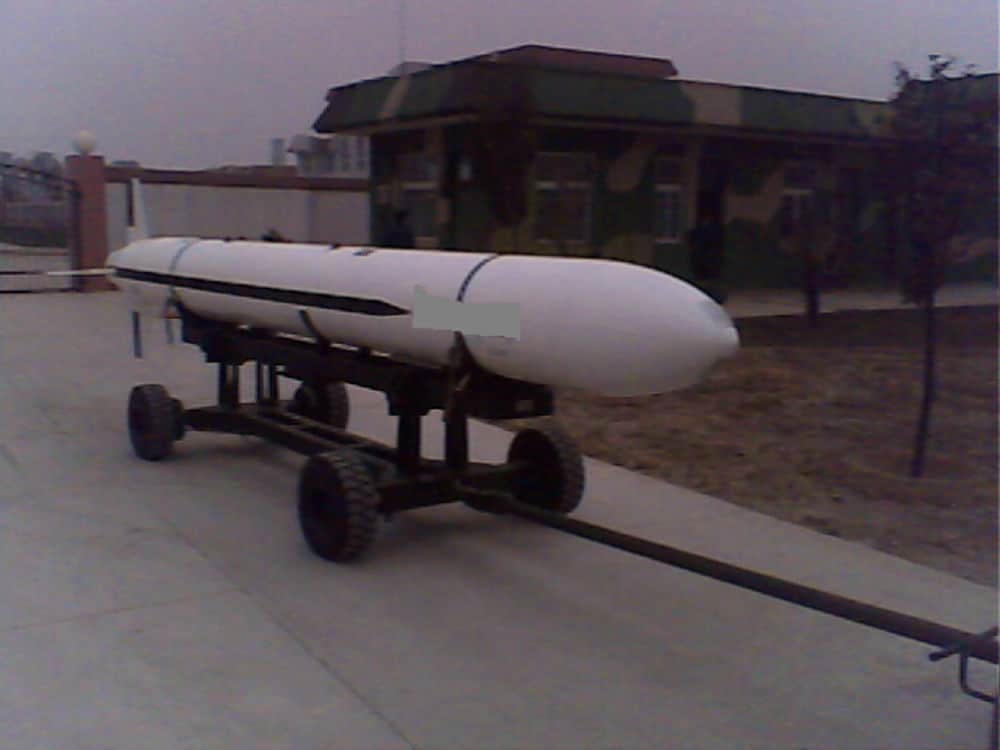
Hong Niao Development
The Hong Niao missile family is similar in shape and size to the Russian AS-15A “Kent” (Kh-55) and SS-N-21 “Sampson” (3M10) and to the U.S. RGM-109 “Tomahawk” cruise missiles. The missiles have a circular-shaped body, with two wings, a low tailplane, and a vertical fin mounted on the upper side that unfolds after launch. An air inlet for the turbojet engine is located under the body at the rear of the missile.
Including the tandem-mounted booster rocket, the HN-1 measures 7.2 m in length, 0.5 m in body diameter, and 2.5 m in wing span. The booster rocket weights 200 kg, bringing the missile’s total launch weight to 1,200 kg. The HN-1 can reportedly carry a 400 kg payload, which could be a 20 to 90 kT nuclear warhead, high explosive warhead, or submunitions warhead. 2 Subsequent missile variants may vary in these measurements.
Hong Niao 1
Hong niao 2, hong niao 3.
- “C-602 (HN-1/-2/-3/YJ-62/X-600/DH-10/CJ-10/HN-2000),” in IHS Jane’s Weapons: Strategic 2015-2016 , ed. James C. O’Halloran (United Kingdom: IHS, 2015), 115-119.
- Hans M. Kristensen and Robert S. Norris, “Chinese Nuclear Forces, 2016,” Bulletin of American Scientists , Vol. 72, Issue 4, 2016, http://www.tandfonline.com/doi/full/10.1080/00963402.2016.1194054.
- Report refers to the Hong Niao missiles as the DH-10. Office of the Secretary of Defense, Military and Security Developments Involving the People’s Republic of China 2010 , Annual Report to Congress, http://www.defense.gov/Portals/1/Documents/pubs/2010_CMPR_Final.pdf, 31.
- “C-602 (HN-1/-2/-3/YJ-62/X-600/DH-10/CJ-10/HN-2000),” in I HS Jane’s Weapons: Strategic 2015-2016 , 115-119.
![F-111 Aardvark Index Page [Click for more ...] cj 10 cruise missile](https://www.ausairpower.net/APA/f-111.png)
CHETA HY-1 / CSS-C-2 Silkworm
Cheta sy-1/fl-1 flying dragon / css-n-1 scrubbrush.
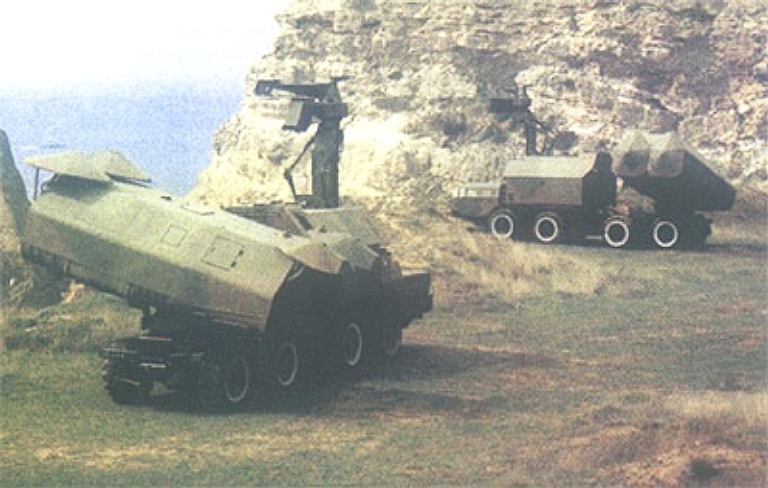
CHETA C-201/HY-2 / CSS-N-2 / CSS-C-3 Seersucker/“Silkworm”
- HY-2A - the conscan active radar seeker was replaced with a scanning infrared terminal seeker.
- HY-2A-II - improved HY-2A.
- HY-2B - the conscan active radar seeker was replaced with an improved monopulse seeker with better jam resistance and clutter rejection.
- HY-2B-II - improved HY-2B.
- HY-2C - the conscan active radar seeker was replaced with a television terminal seeker.
- HY-2G - an improved radar altimeter was employed for more precise altitude control.
- HY-2J - variant exported to Iraq during the 1980s.
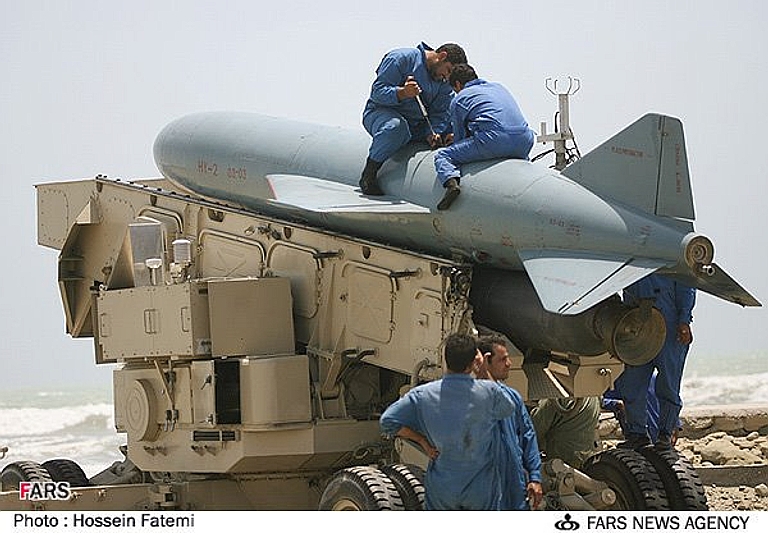
HAIC SY-2/SY-2A/FL-2 / CSS-N-5 Sabot
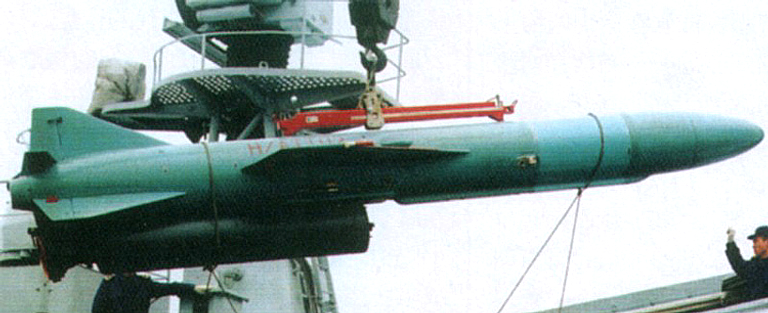
CHETA C-201W / HY-4/HY-4A/G / HY-41 / CSS-C-7 Sadsack
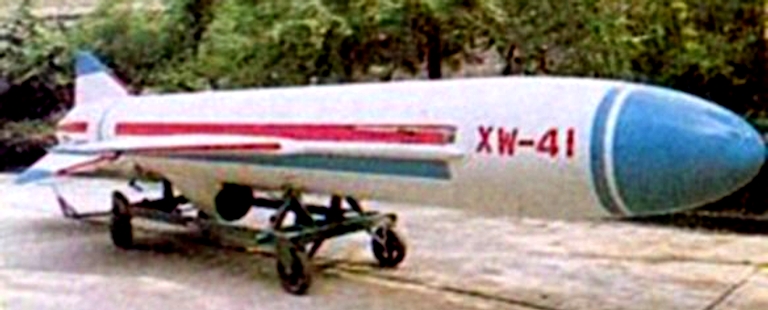
C-301 / FL-3 / CSS-C-6 Sawhorse
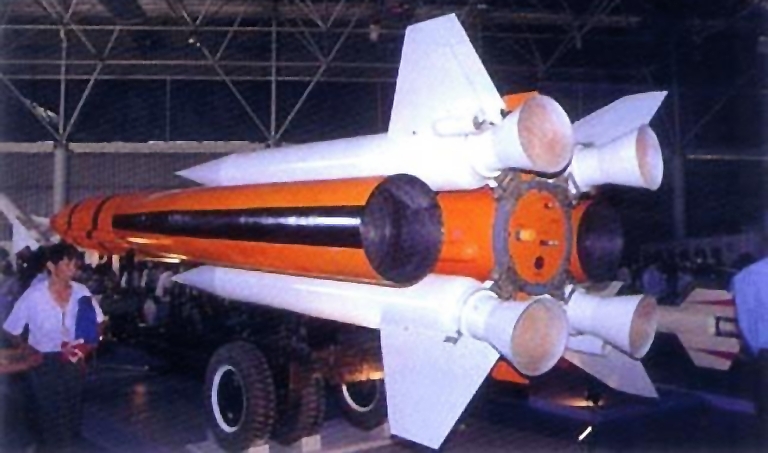
CHETA YJ-6/C-601 / YJ-61/C-611 / CAS-1 Kraken
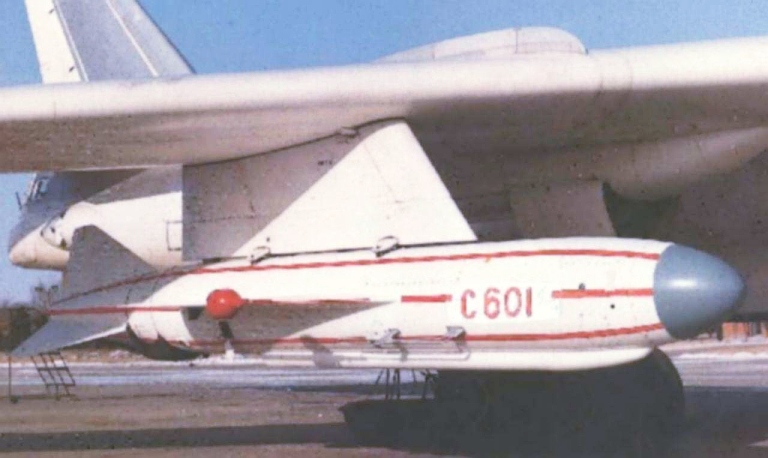
CHETA YJ-63/KD-63
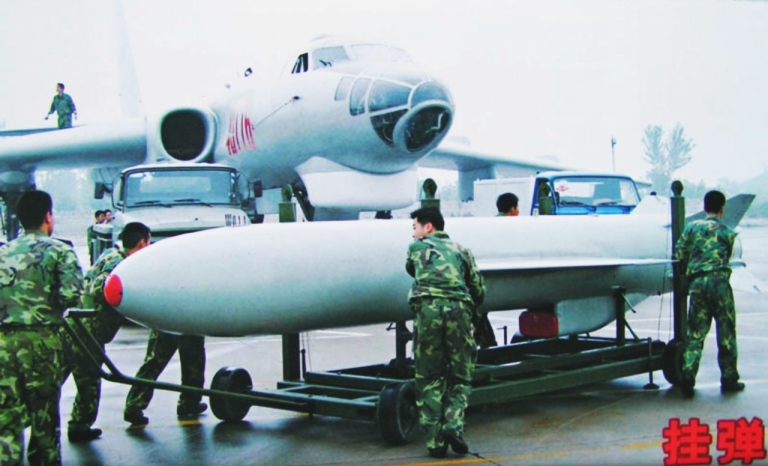
CASIC YJ-62/C-602
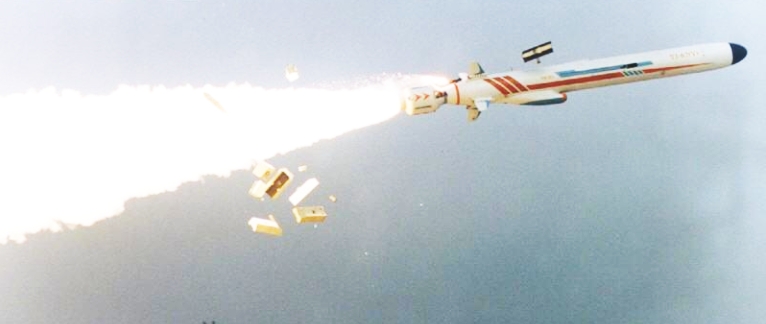
Launch of a 'Tomahawk-like' PLA-N YJ-62/C-602 cruise missile .
The YJ-62 cruise missile is a PLAN analogue to the anti-shipping variants of the RGM-109 Tomahawk/MRASM. The weapon has a similar general configuration to the Tomahawk family, but employs a unique fixed scoop inlet for the air breathing engine.
Claims for this weapon include an active radar homing seeker with a monopulse antenna, GPS/Glonass/inertial midcourse guidance, alternate turbojet and turbofan engines, and ship, sub, coastal battery and air launch configurations.
Cited specifications include a length of 6.1/7.0 metres, launch mass of 1,140/1,350 kg, warhead mass of 300 kg, cruise speed of 0.9 Mach, range for turbojet variant of 280 km / 150 NMI, and dual mode anti-ship and coastal target capability similar to later blocks of the Harpoon.
The YJ-62 is claimed to have been deployed on the Type 052C Luyang II destroyer.
Detail of YJ-62/C-602 cruise missile at Zhuhai 2008 (images © 2009, Zhenguan Studio).
YJ-62 radome in test (CASIC).
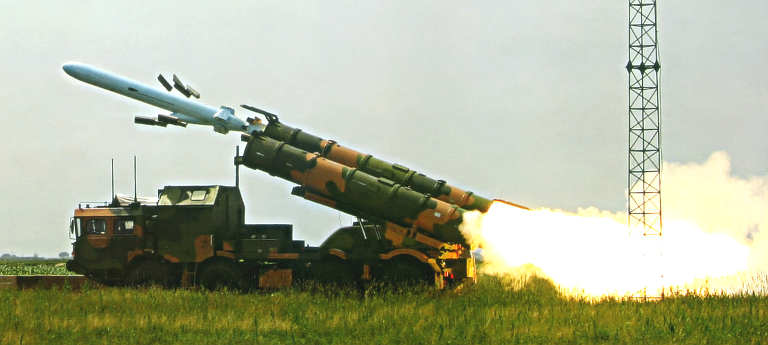
CHETA C-701/C-701KD, C-704/C-704KD, C-705
Above C-704 cruise missile with active radar seeker (images © 2009, Zhenguan Studio).
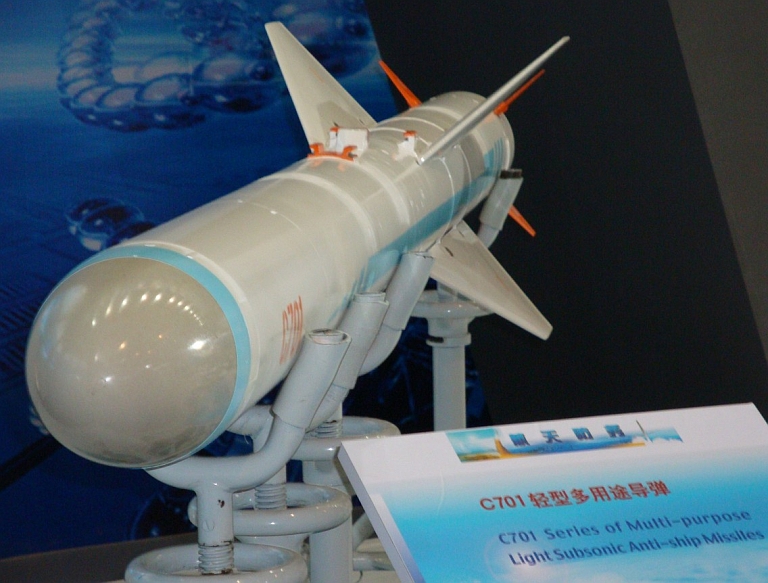
C-701KD variant with Electro-Optical seeker.
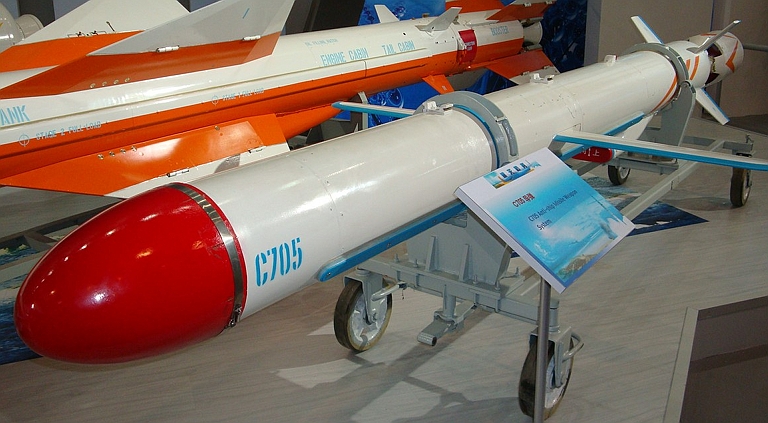
CHETA YJ-8/YJ-81/C-801, YJ-82/C-802, YJ-83/C-803 and KD-88
YJ-82/C-802A cruise missile at Zhuhai 2008 (image © 2009, Zhenguan Studio).
China's indigenous response to the Exocet and Harpoon lies in the YJ-8 (CSS-N-4 Sardine) family of missiles, available in ship, sub, land and air launch variants. The basic air launch rocket powered YJ-8K achieves 27 NMI (50 km) range, the improved YJ-81 cca 43 NMI (80 km), the turbojet YJ-82 (CSS-N-8 Saccade) cca 65 NMI (120 km), and the recently trialed YJ-83 variant around 135 NMI (250 km). These are the primary weapon of many PLA-N warships, and the FH-7 maritime fighter carrying four rounds. The most recent air launched variant is designated the KD-88.
The most notable export of this weapon has been to Iran, who operate naval and coastal battery variants.
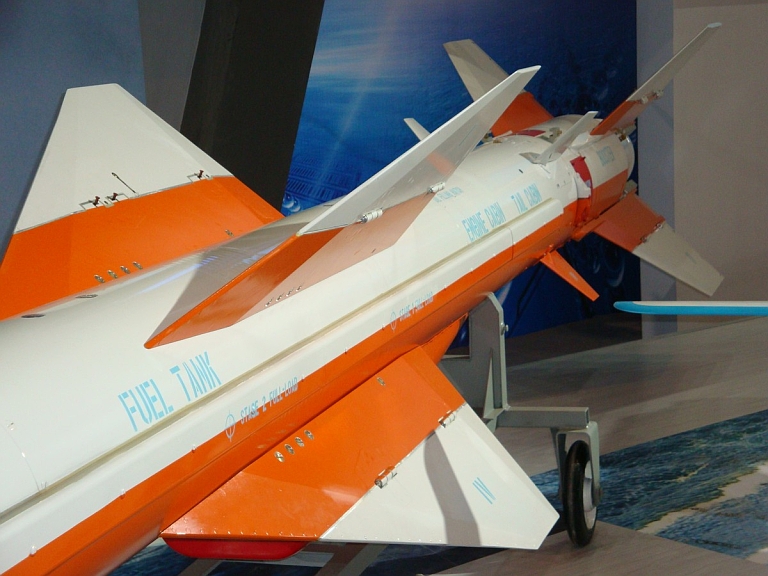
Aft view of YJ-82/C-802A cruise missile at Zhuhai 2008 (image © 2009, Zhenguan Studio).

KD-88 Air Launched Anti-Ship Cruise Missile
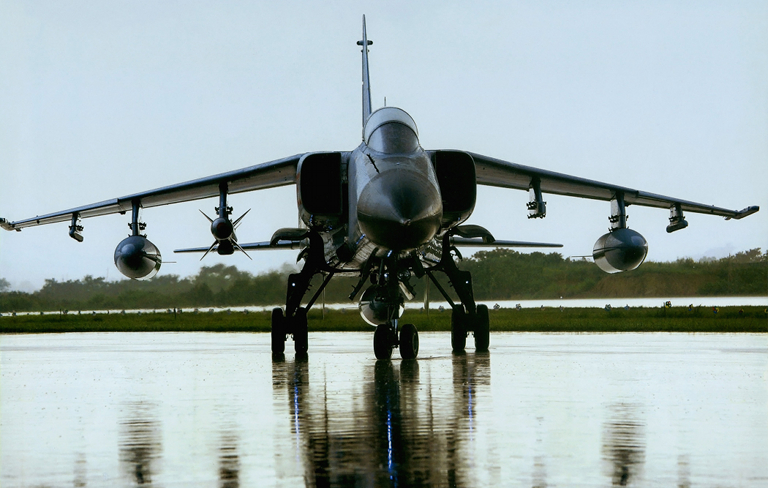
Strategic Cruise Missiles
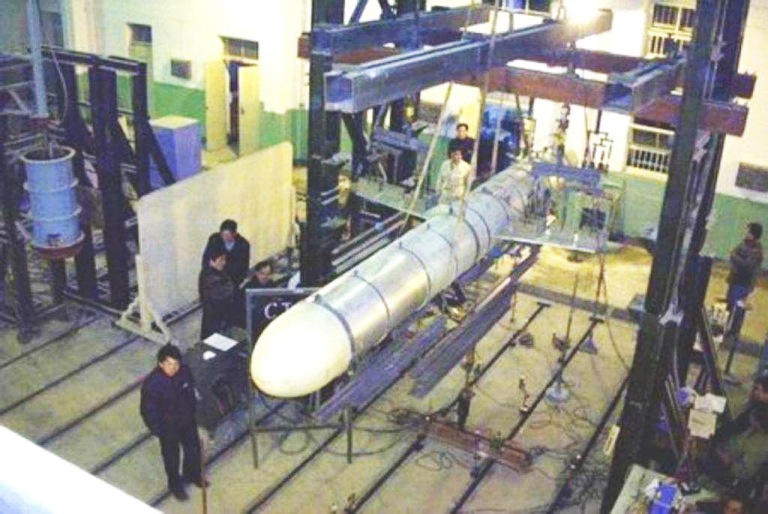
Undesignated PLA cruise missile, possibly a DH-10 or HN series prototype.
China has had a long running program aimed at developing strategic land attack cruise missiles suitable for aerial, sub and ship deployment. Reports abound claiming the PRC has actively shopped the Middle East for debris from expended or failed Tomahawk rounds. More recently credible reports emerged claiming China has purchased tooling for the Raduga Kh-65SE, the reduced range export variant of the Kh-55 (AS-15 Kent) which is Russia's answer to the Boeing AGM-86B ALCM. There is also a wealth of documentary evidence covering a covert operation in which China procured from the Ukraine multiple Kh-55 rounds and test equipment.
Many sources claim that the PLA now operates the indigenous HN-1 (320 NMI/600 km), HN-2 (800+ NMI/1,500+ km) and the HN-3 (1,350 NMI/2,500 km). The sole good quality image to emerge suggests these weapons are clones of the BGM-109 Tomahawk, suitable for naval and aerial launch. The CJ-10/DH-10 cruise missile, declared operational, also resembles a Tomahawk.
Given the availability of Russian TERCOM, DSMAC, Glonass, Western GPS and computer technology, the only issue for the PLA will lie in good quality 12 inch 600 lb class turbofan availability to power a genuine AGM-86/BGM-109 class strategic cruise missile. With submarines, surface warships and H-6H Badgers, there is no shortage of launch platforms. The recently unveiled H-6H variant with four wing pylons is clearly intended for such a role.
CJ-10 Long Sword / DH-10
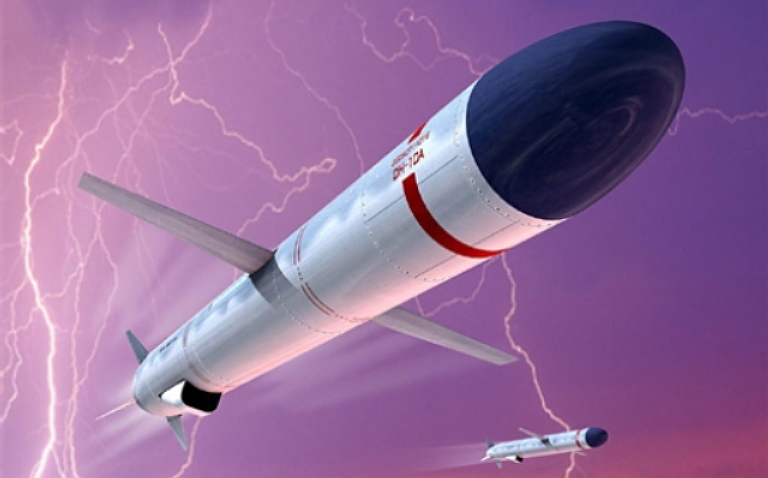
- Norman Friedman, The Naval Institute guide to world naval weapons systems, 1997-1998, URI: http://books.google.com.au/
- Congressional Report, SELECT COMMITTEE ON U.S. NATIONAL SECURITY AND MILITARY/COMMERCIAL CONCERNS WITH THE PEOPLE'S REPUBLIC OF CHINA, 25th May 1999, URI: http://www.fas.org/spp/starwars/congress/1999_r/cox/ch10bod.htm
- SinoDefence.com website, URI: http://www.sinodefence.com/navy/shipboard-system.asp
- ‘“Zhenmi zhishuai” zai puguang ___ Cong Guoqing 60 zhuonian Dayuebing kan jiefang dier paobing budui’, Tanke Zhuangjia Cheliang , 2009 Niandi,11 Qi, Zhongdi 295 Qi,pp. 22-25.
- Kopp, Carlo. ‘Bypassing the NMD: China and the Cruise Missile Proliferation Problem’, International Assessment and Strategy Center, http://www.strategycenter.net /research/pubID.112/pub_detail.asp, 22 June 2006, accessed 10 February 2009.
- ‘Lingshou bian guojia “youlu zhongliang” ___ haiwai pojie Zhongguo CJ-10 luji xunhang daodan’, Tanke Zhuangjia Cheliang , 2009 Niandi,12 Qi, Zhongdi 297 Qi,pp. 15-18.


IMAGES
VIDEO
COMMENTS
The CJ-10 ( simplified Chinese: 长剑-10; traditional Chinese: 長劍-10; pinyin: Cháng Jiàn 10; lit. 'long sword 10') is a second-generation [1] Chinese land-attack cruise missile. [5] It is derived from the Kh-55 missile. [6] It is reportedly manufactured by the China Aerospace Science and Industry Corporation Third Academy and the China ...
Development. The DH-10 is a land-attack cruise missile (LACM) that can reach subsonic speeds and travel up to 2,000km with a payload of 500 kg. [1] The DH-10 is carried by and launched from a transporter-erector-launcher (TEL) vehicle that carries three canisters or a ship based platform such as the Type 052D guided missile destroyer.
CJ-10 or HN-2. Previously referred to as the DH-10 until 2011, the CJ-10 is the only cruise missile in the PLARF arsenal; other Chinese cruise missiles are under the control of the PLA Navy or PLA Air Force. 22 As opposed to ballistic missiles, cruise missiles have a significantly lower trajectory and remain in the atmosphere for the duration of their flight time; this makes cruise missiles ...
While current DH-10 ground-launch cruise missiles and YJ-63/AKD-63 air-launched systems are most relevant for a Taiwan contingency, there are strong signs that China is expanding its inventory to include both air-launched and ship-launched LACMs. An air-launched version of the DH-10, called the CJ-20, has reportedly been tested on the H-6 ...
The CJ-10 (DH-10) and CJ-100 (DF-100) ground-launched cruise missiles (GLCMs) have ranges of 1,500 and 2,000km, respectively. As of 2022, the U.S. DoD estimates China has more than 300 GLCMs. Their YJ-21 hypersonic cruise missile has a range of 1,000-1,500km and flies at a speed of up to 10 Mach.
China CJ-10 LACM. WASHINGTON: Building a new defensive network against cruise missiles could cost anywhere between $75 billion to $465 billion over 20 years, depending on whether the goal is to ...
The DF-10 is a second-generation of Chinese-made mobile launcher surface-to-surface cruise missile manufactured by the China Aerospace Science and Industry Corporation Third Academy and the China Haiying Electro-Mechanical Technology Academy. The missile was previously known as the CJ-10 "Long Sword" or DH-10.
The DH-10 is widely reported on the Chinese language internet to be a product of the China Aerospace Science and Industry Corporation's (CASIC) Ninth Academy (also known as the Sanjiang Aerospace Group, or 066 Base) in Hubei, China.5 According to these reports, the chief designer of the DH-10 and "Father of China's cruise missile" is ...
The CJ-10 ( simplified Chinese: 长剑-10; traditional Chinese: 長劍-10; pinyin: Cháng Jiàn 10; lit. 'long sword 10') is a second-generation Chinese land-attack cruise missile. It is derived from the Kh-55 missile. It is reportedly manufactured by the China Aerospace Science and Industry Corporation Third Academy and the China Haiying ...
A cruise missile is an unmanned self-propelled guided vehicle that sustains flight through aerodynamic lift for most of its flight path and whose primary mission is to place an ordnance or special payload on a target. ... DF-10/CJ-10 China (CJ-10K - 1500 km, CJ-20 - 2000 km) Popeye Turbo SLCM Israel; GEZGİN (800-1,200 km) Turkey;
Increased anti-surface capability will be seen with the YJ-18 anti-ship cruise missile (ASCM) and CJ-10 land attack cruise missile (LACM). ... Particularly concerning is the firepower the CJ-10 ...
Xinhui, via China Defense Forum. A DH-10 land attack cruise missile (LACM) launches out of its canister, heading for parts unknown. Weighing about 1-1.5 tons (about the same size as the American ...
The CJ-10 Cruise Missile can be modified with a nuclear warhead. Not only nuclear, but conventional warheads are on this missile. In addition, the CJ 10 missile was shown at a military parade held in 2009. That means that the DF 10 cruise missile is thought to have entered Chinese military service that year.
The parade also showcased China's investment in advanced missiles, revealing six previously unseen missile systems. These included three new cruise missiles (YJ-12B, YJ-18, and CJ-100), two ballistic missiles (JL-2 and DF-41), and a hypersonic glide vehicle (DF-17). China also showed several other recent systems, including the the DF-31AG and ...
The CJ-100, which is a supersonic cruise missile, was reportedly carried by an H-6N bomber in China's National Day parade last year. The H-6N is specifically designed to carry outsize loads ...
The CJ-10 (simplified Chinese: 长剑-10; traditional Chinese: 長劍-10; pinyin: Cháng Jiàn 10) is a land attack cruise missile (LACM) currently in service with the Second Artillery Corps of the People's Republic of China. It is the first of the Changjian (literally "long sword") series of long range land attack cruise missiles. The CJ-10 debuted during the October 1 military parade in 2009 ...
CJ-10 or HN-2. Previously referred to as the DH-10 until 2011, the CJ-10 is the only cruise missile in the PLARF arsenal; other Chinese cruise missiles are under the control of the PLA Navy or PLA Air Force. 22 As opposed to ballistic missiles, cruise missiles have a significantly lower trajectory and remain in the atmo-
China's missile arsenal has expanded greatly over the years. Much attention has been given to these cruise missiles, ballistic missiles, and hypersonic glide vehicles; as seen with the coverage on the CJ-10, DF-26, and DF-ZF.However, this has the unfortunate consequence of directing attention away from other missiles that would also play an important role in China's area denial and strike ...
An image released online in early November appears to show a ground-launched version of China's YJ-12 antiship cruise missile. The missile is paired with a five-axle TEL, similar to that paired with China's CJ-10 cruise missile. The YJ-12 is a supersonic cruise missile with an estimated range of 400-500 km while carrying a 200 kg payload....
PLA Air - Surface Missiles. The ground launched CJ-10 Long Sword is a strategic cruise missile modelled on the United States BGM-109G GLCM and Soviet RK-55 Relief, the latter both scrapped under treaty obligations. Chinese sources credit this missile with a range of up to 1,100 nautical miles.